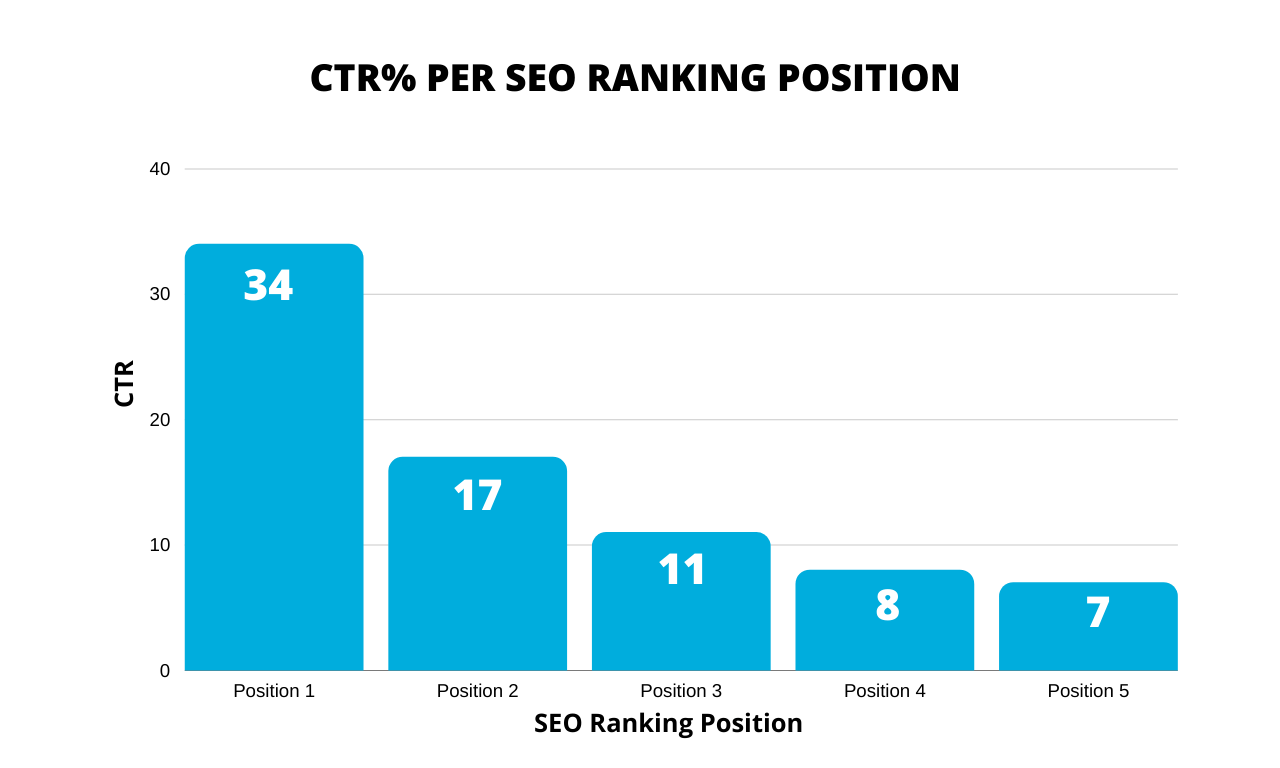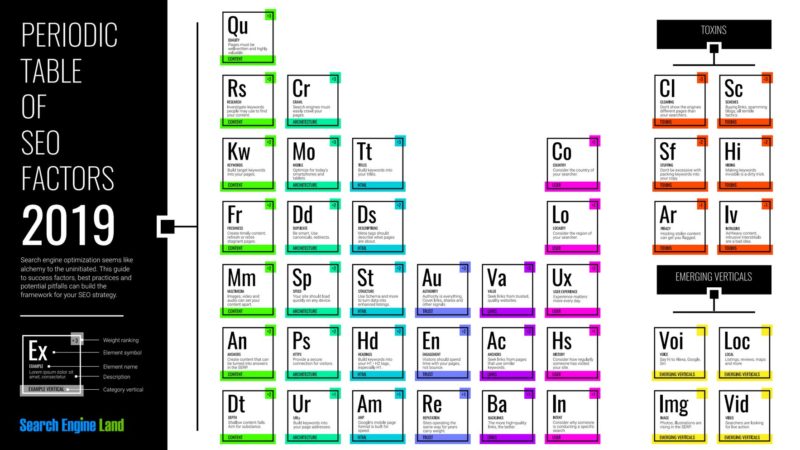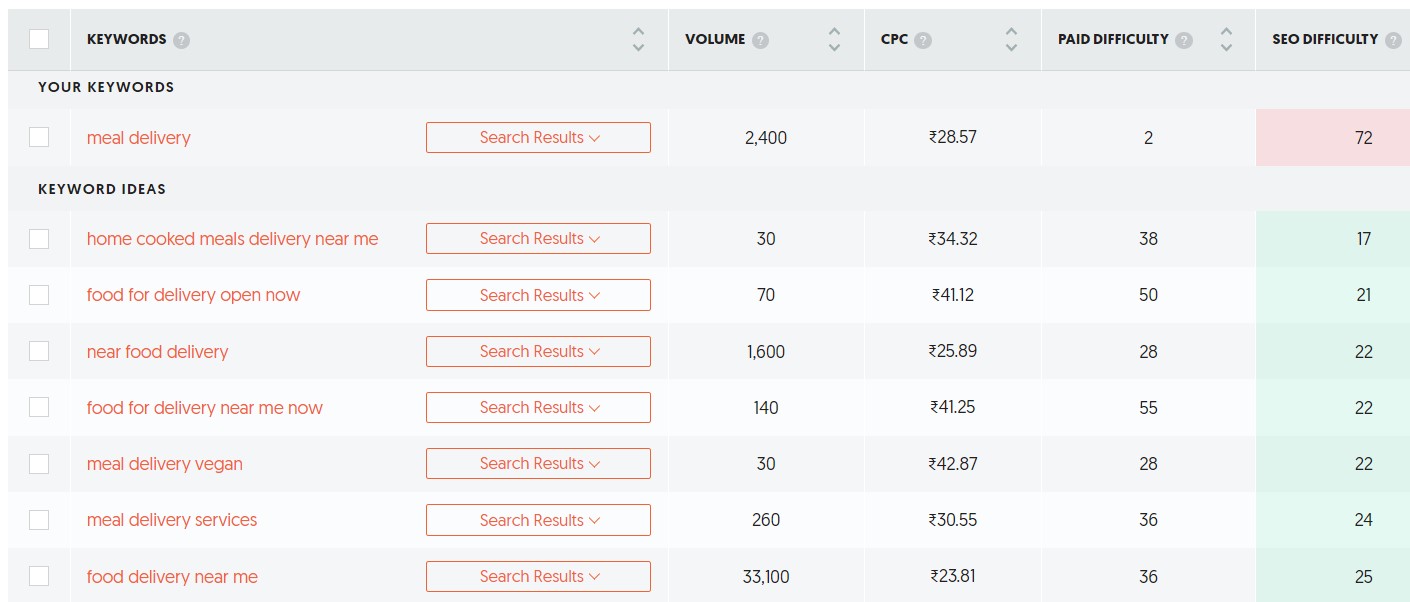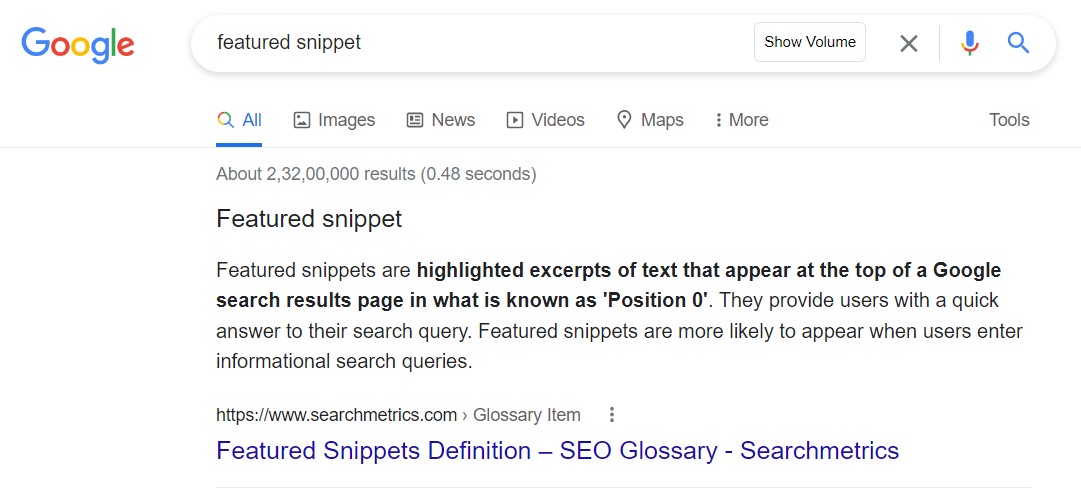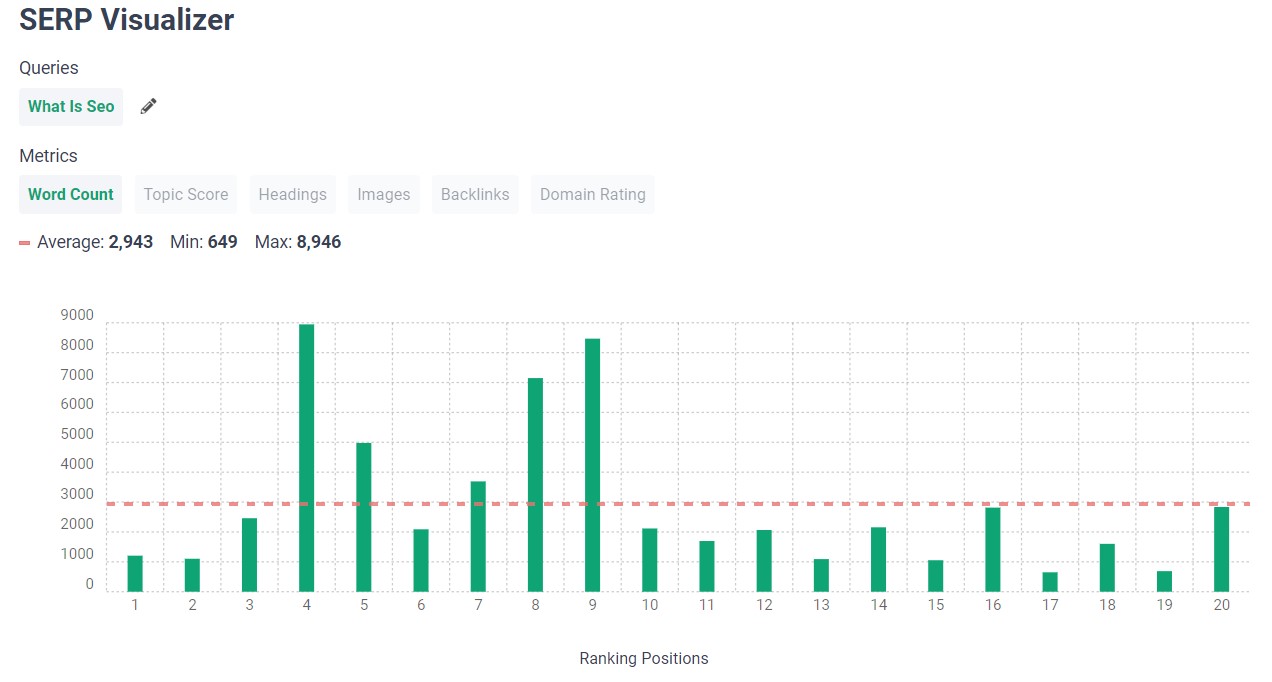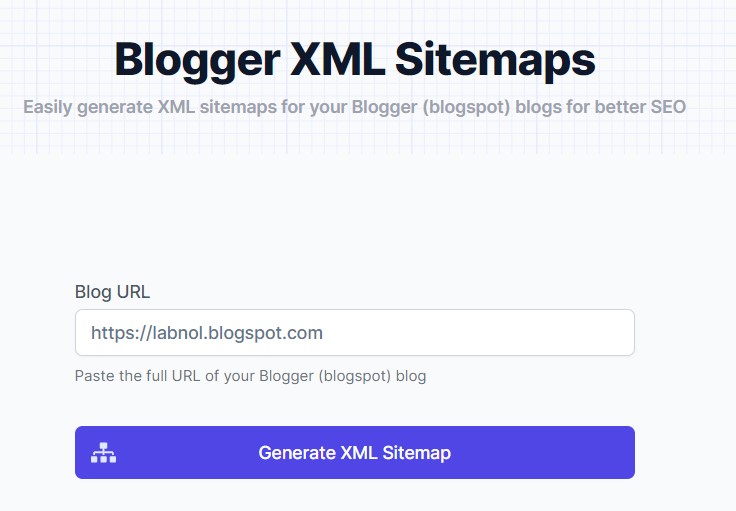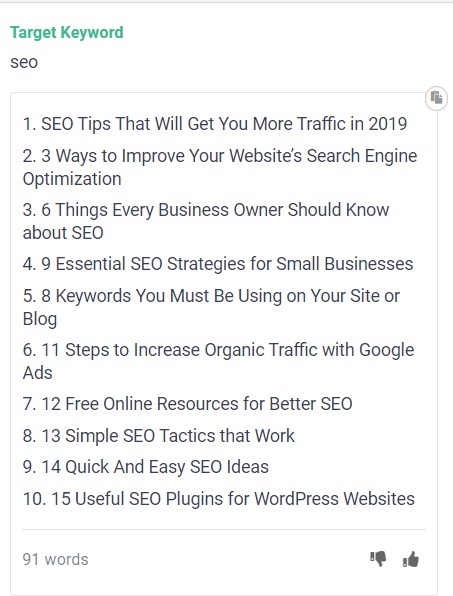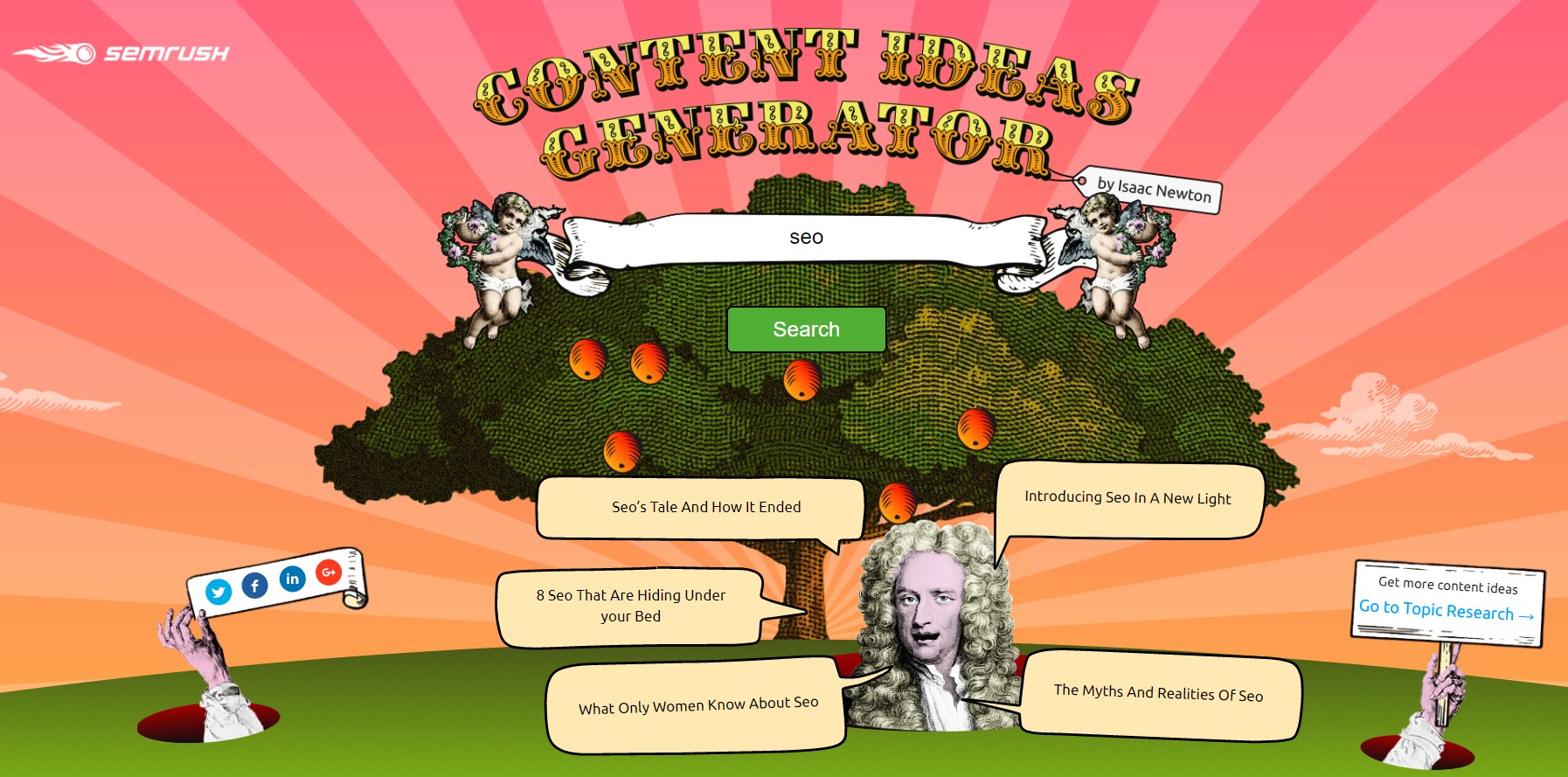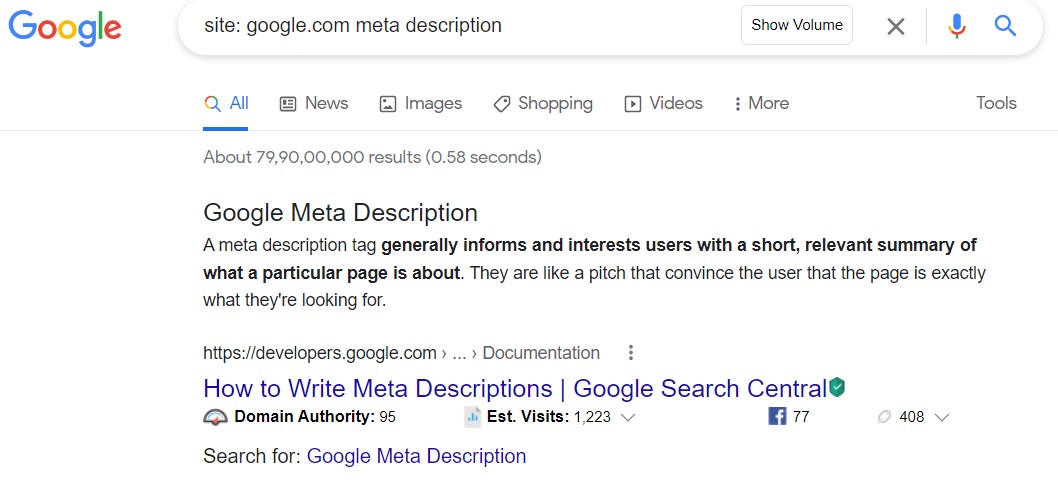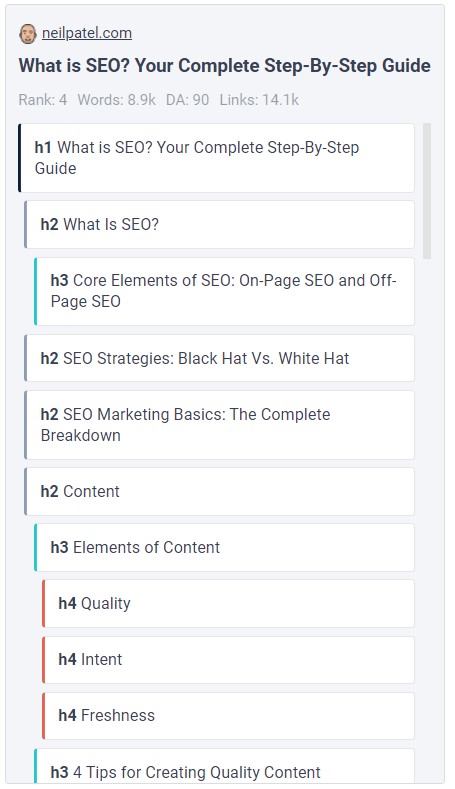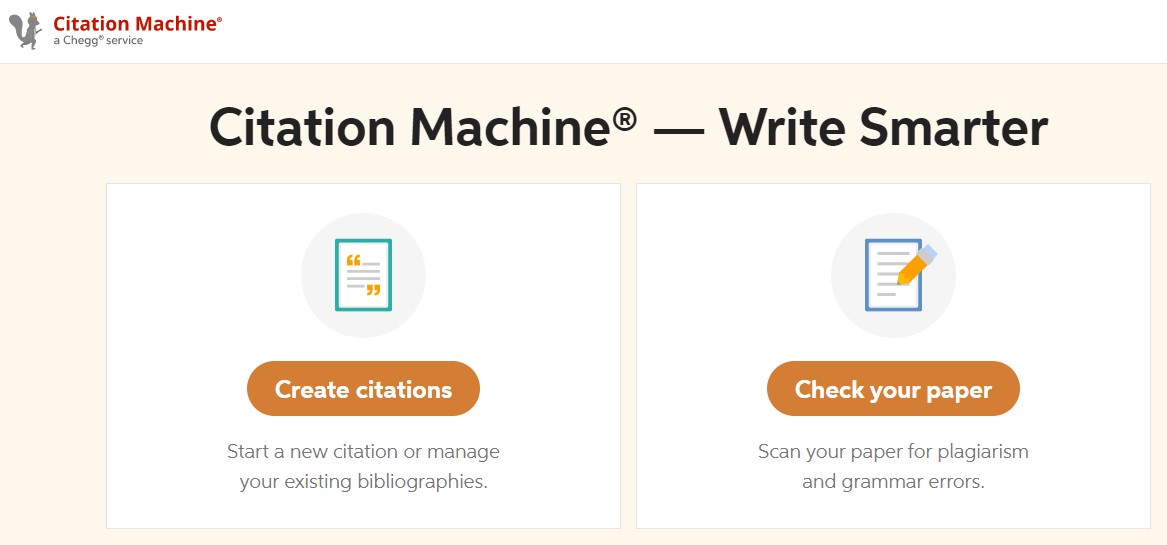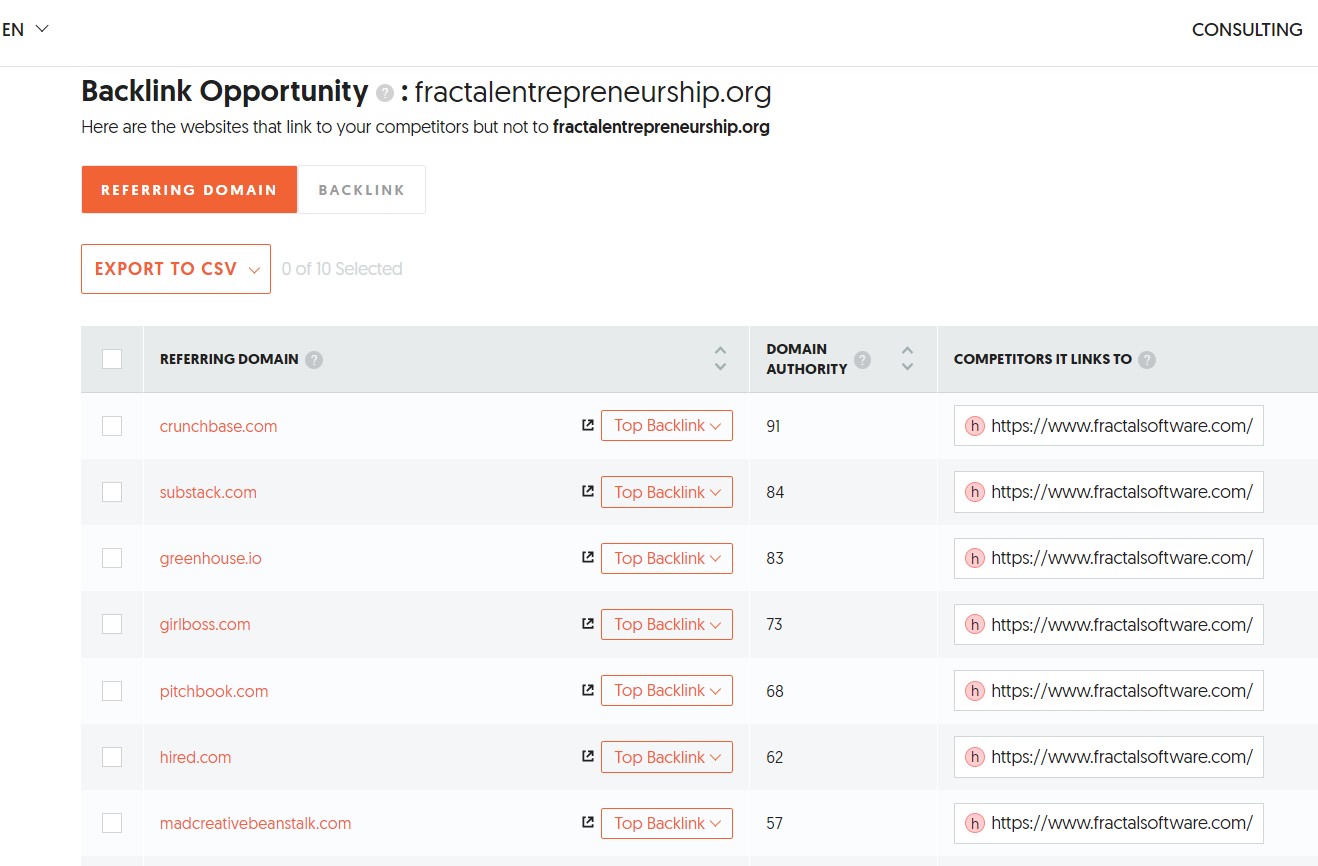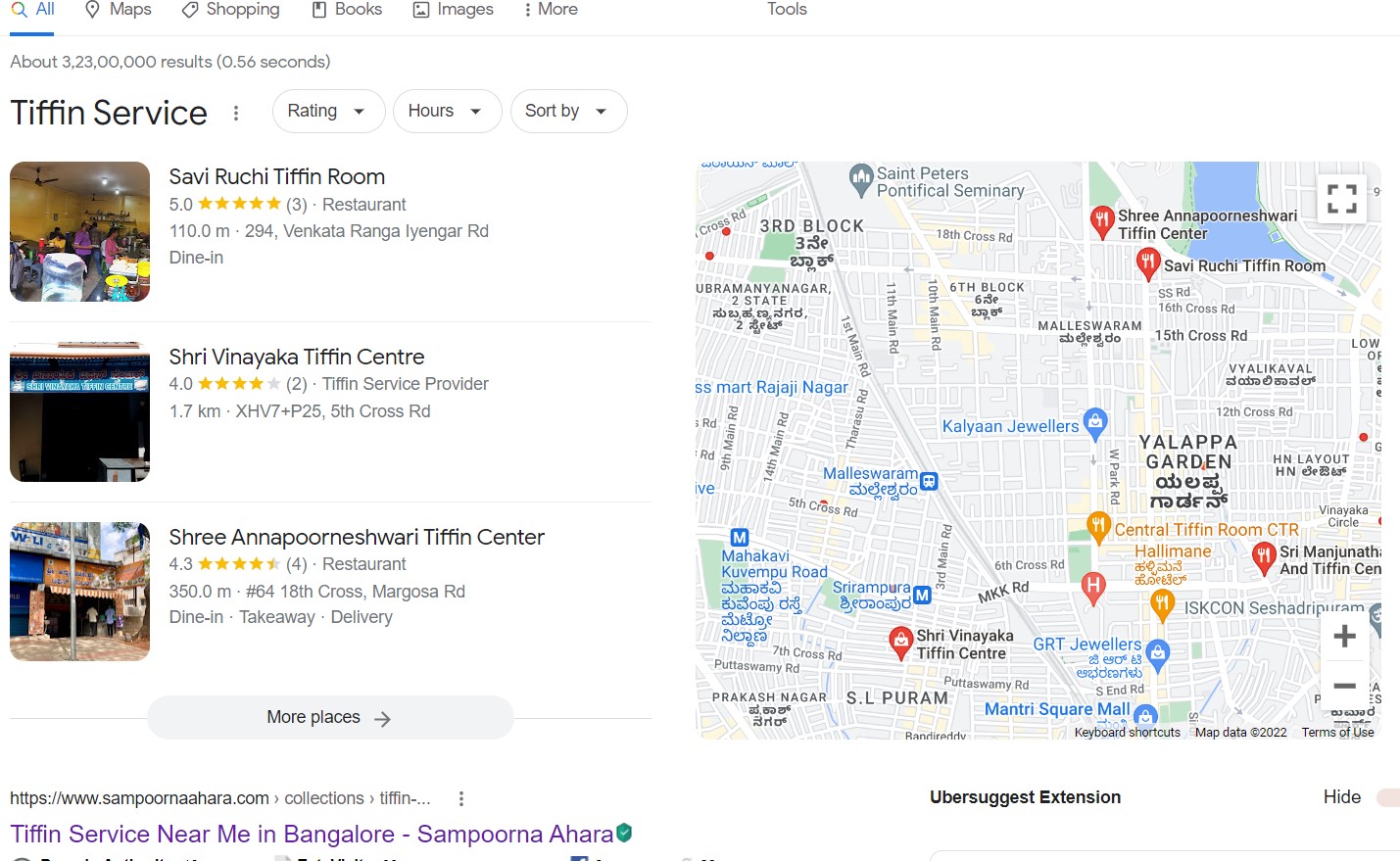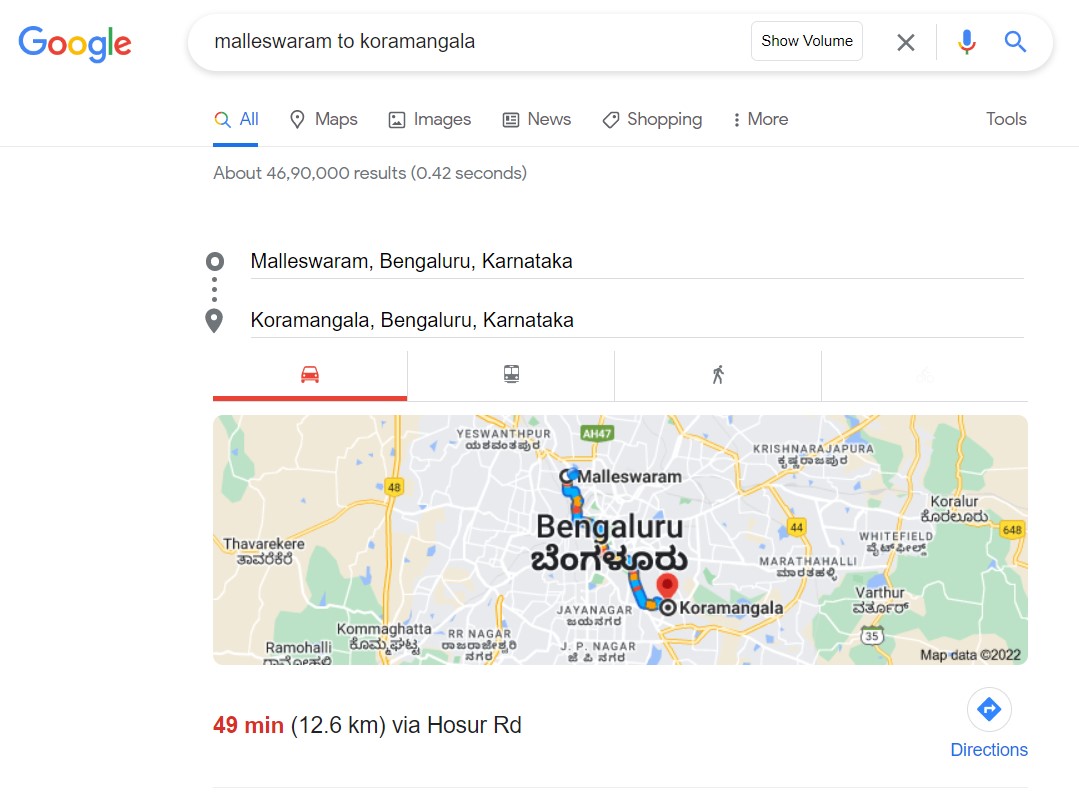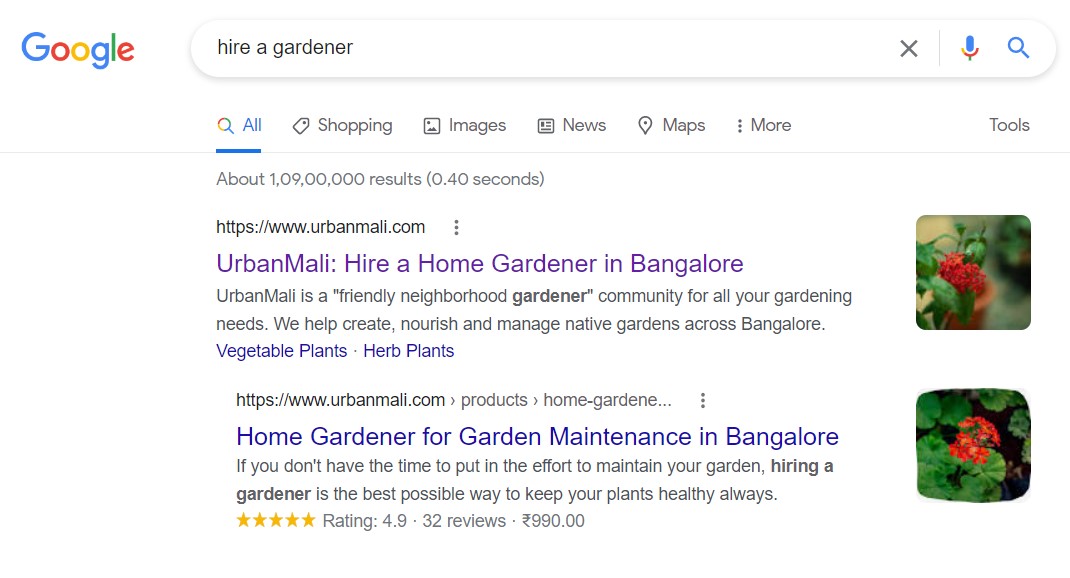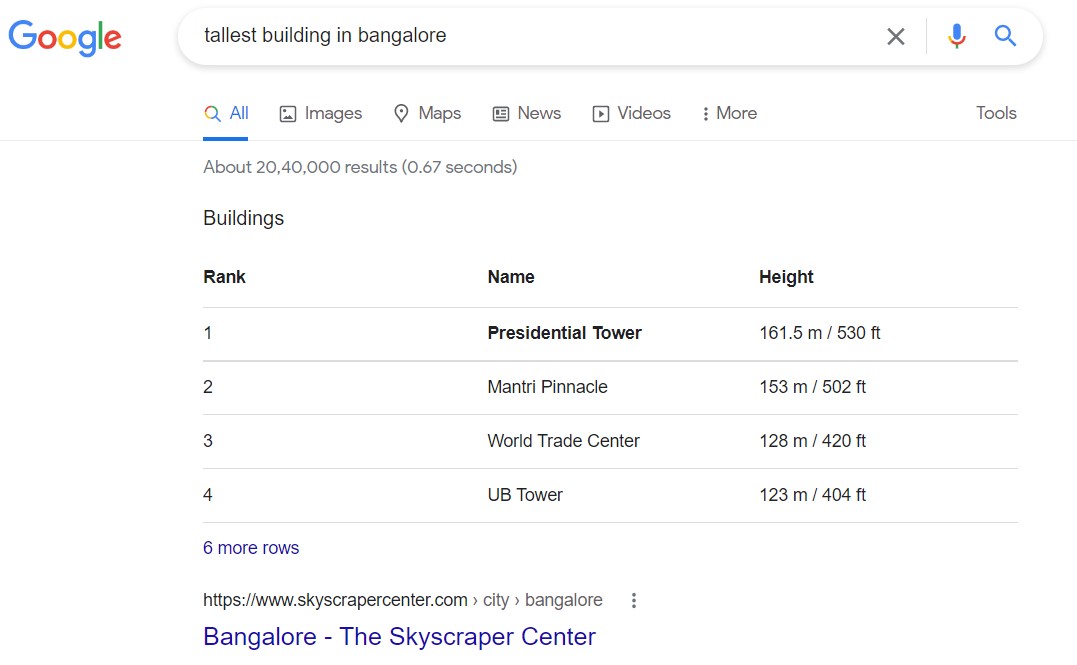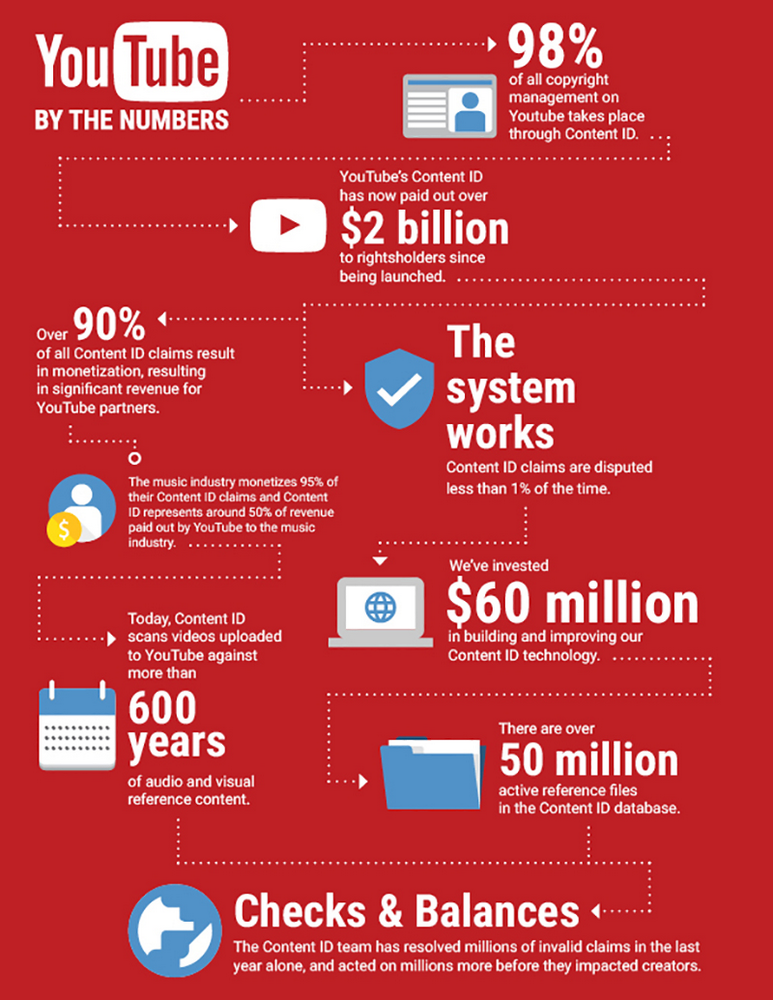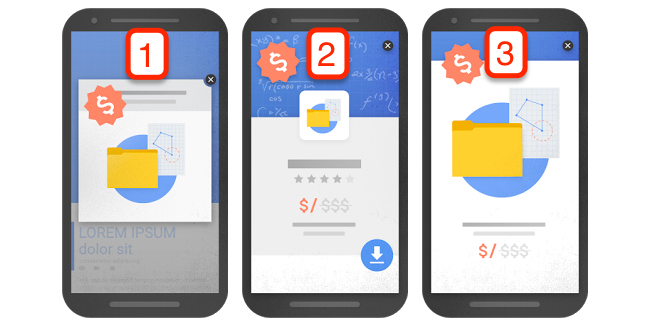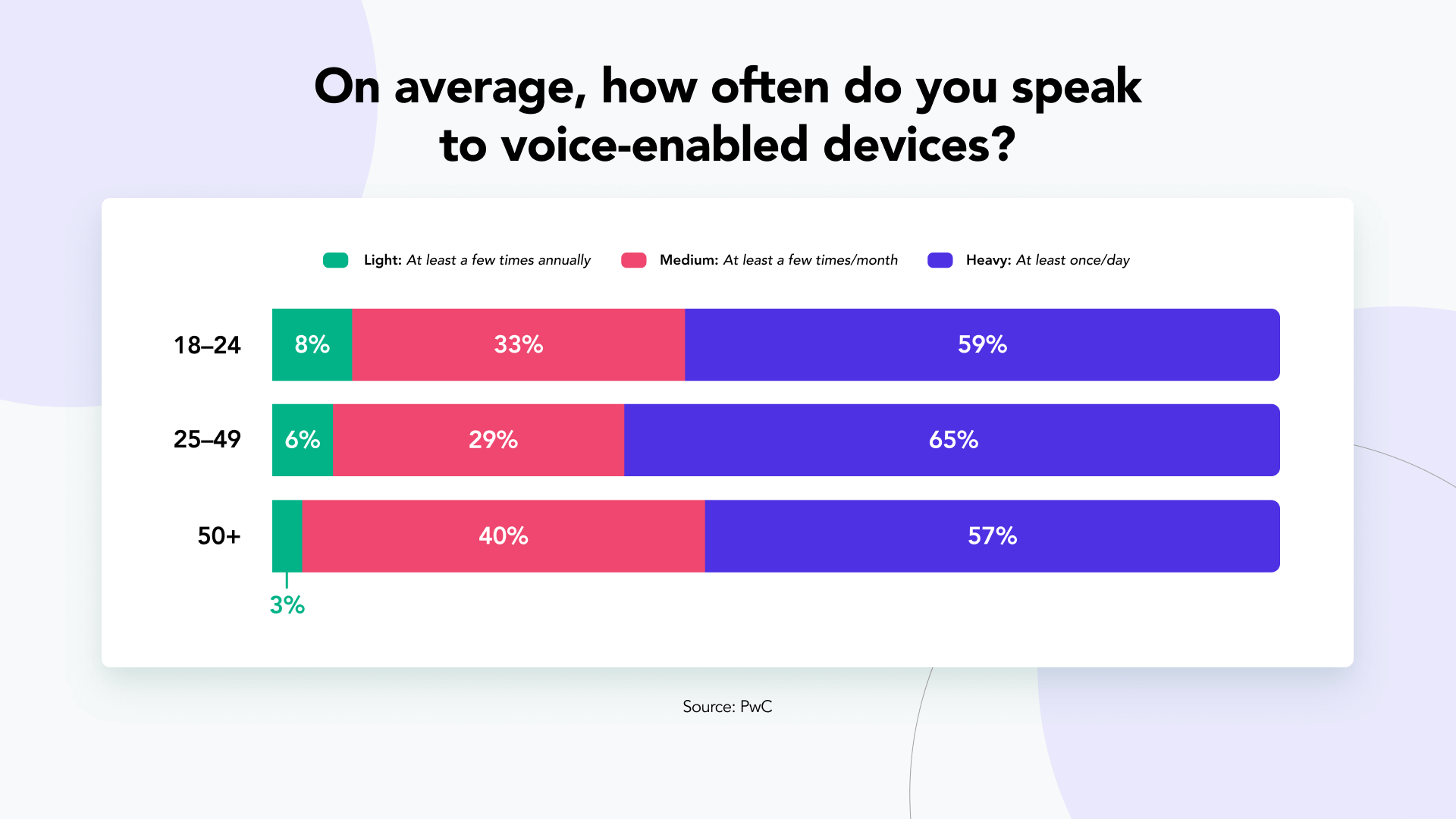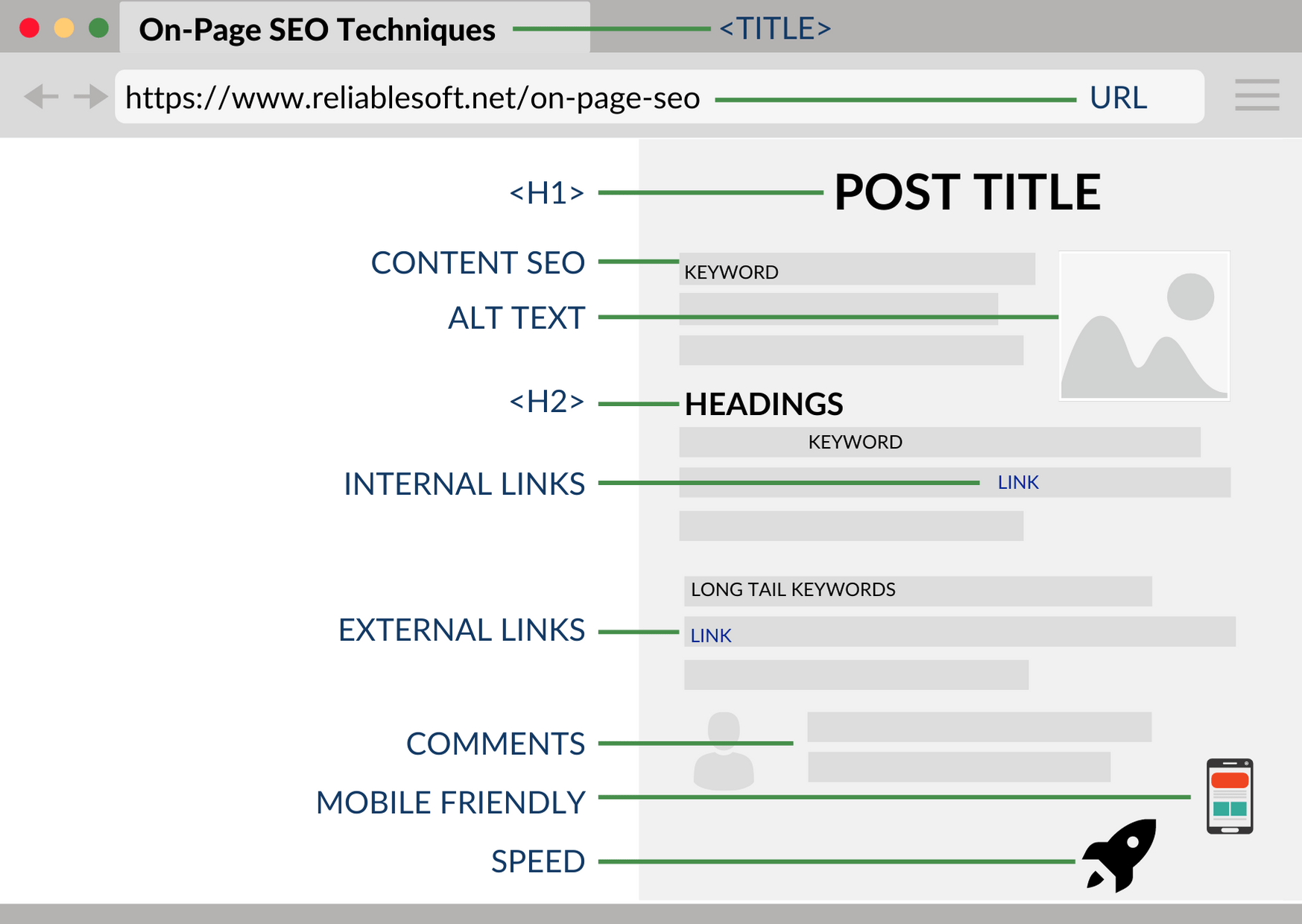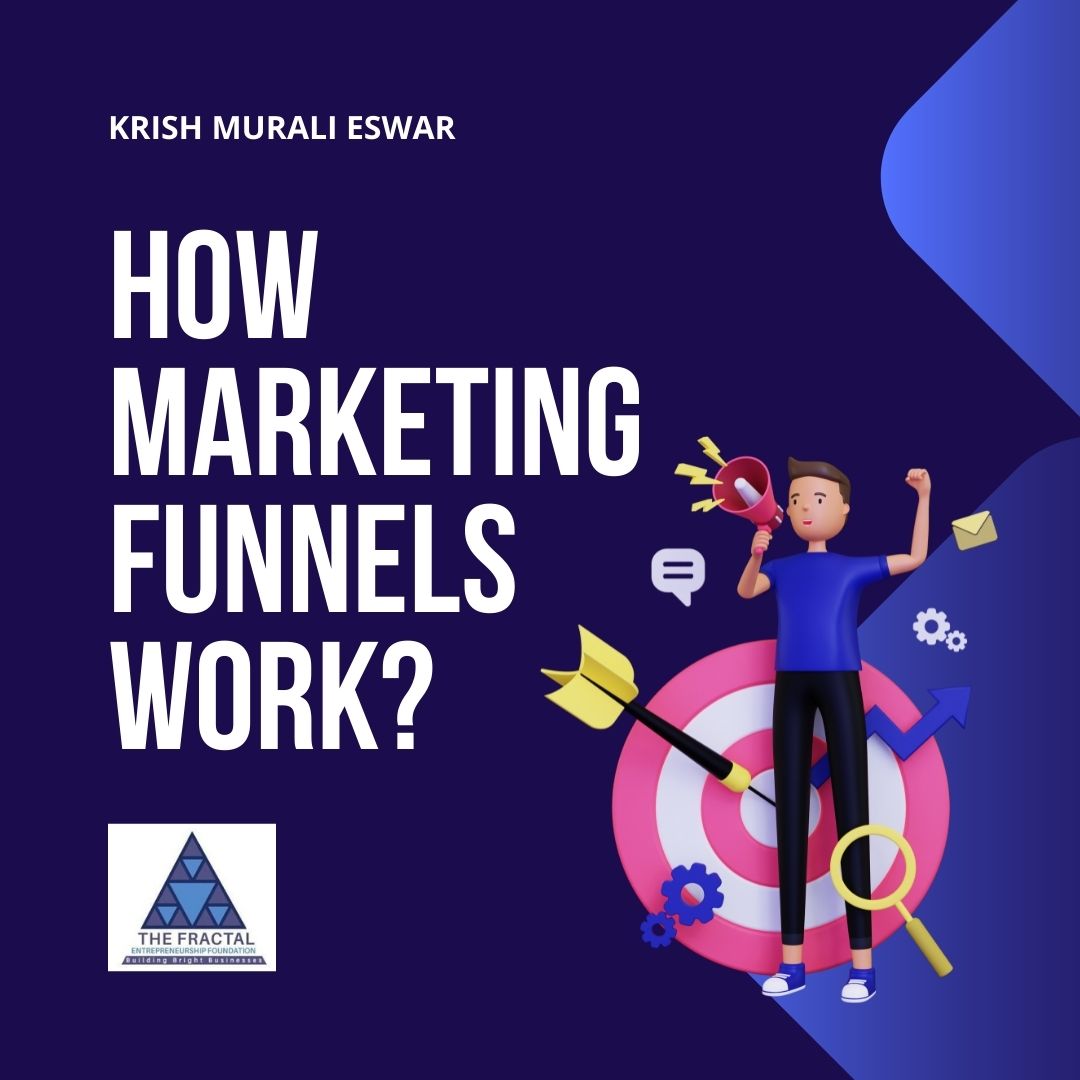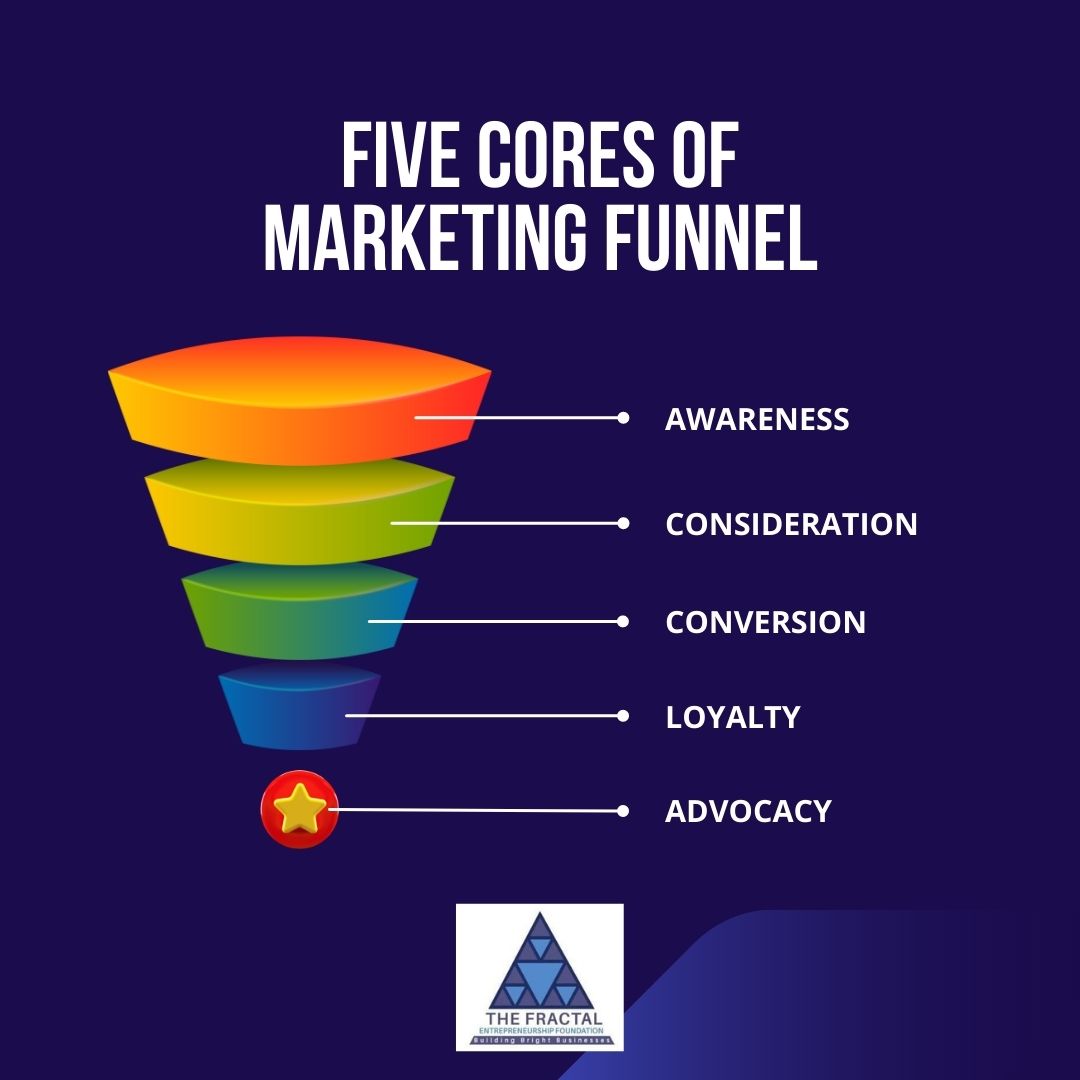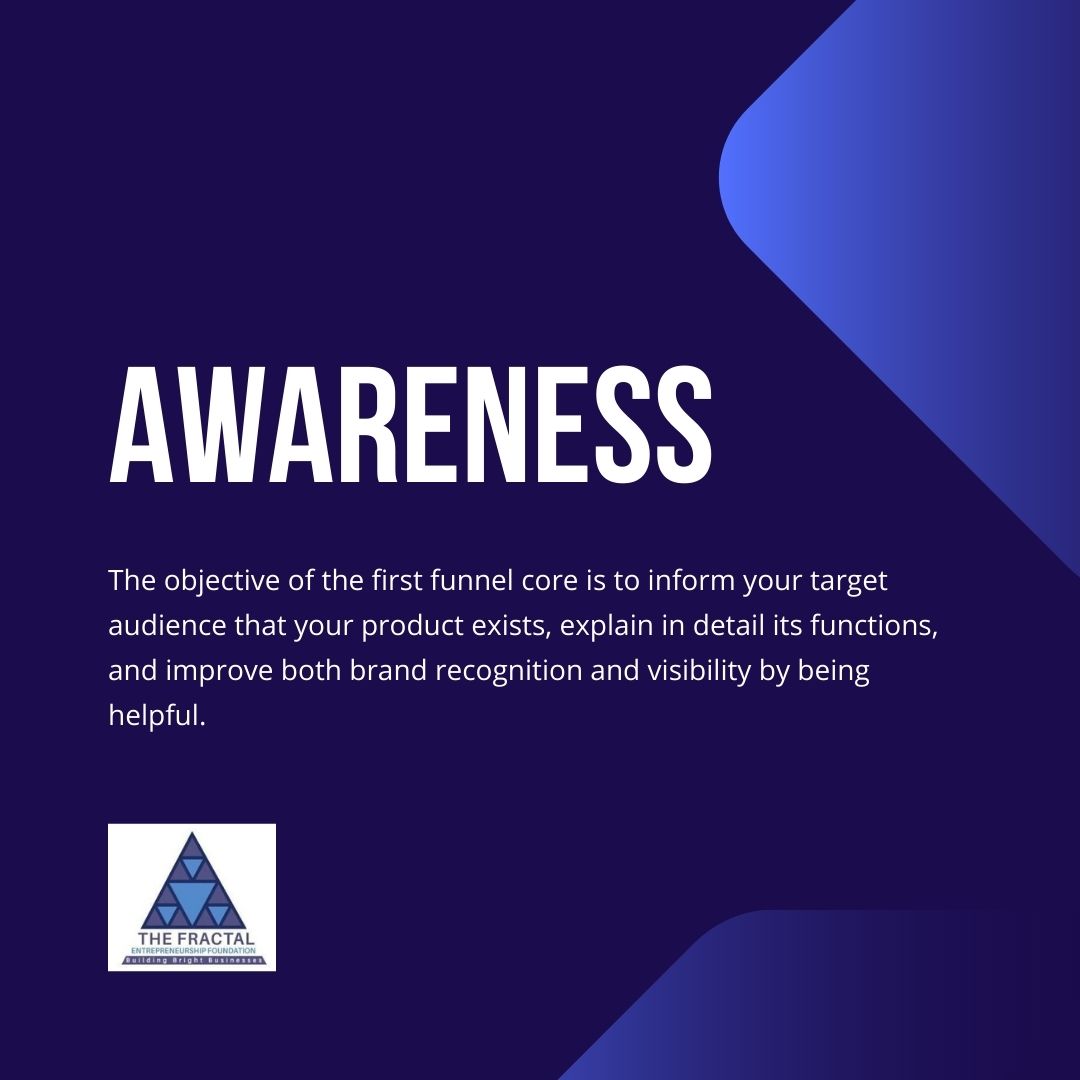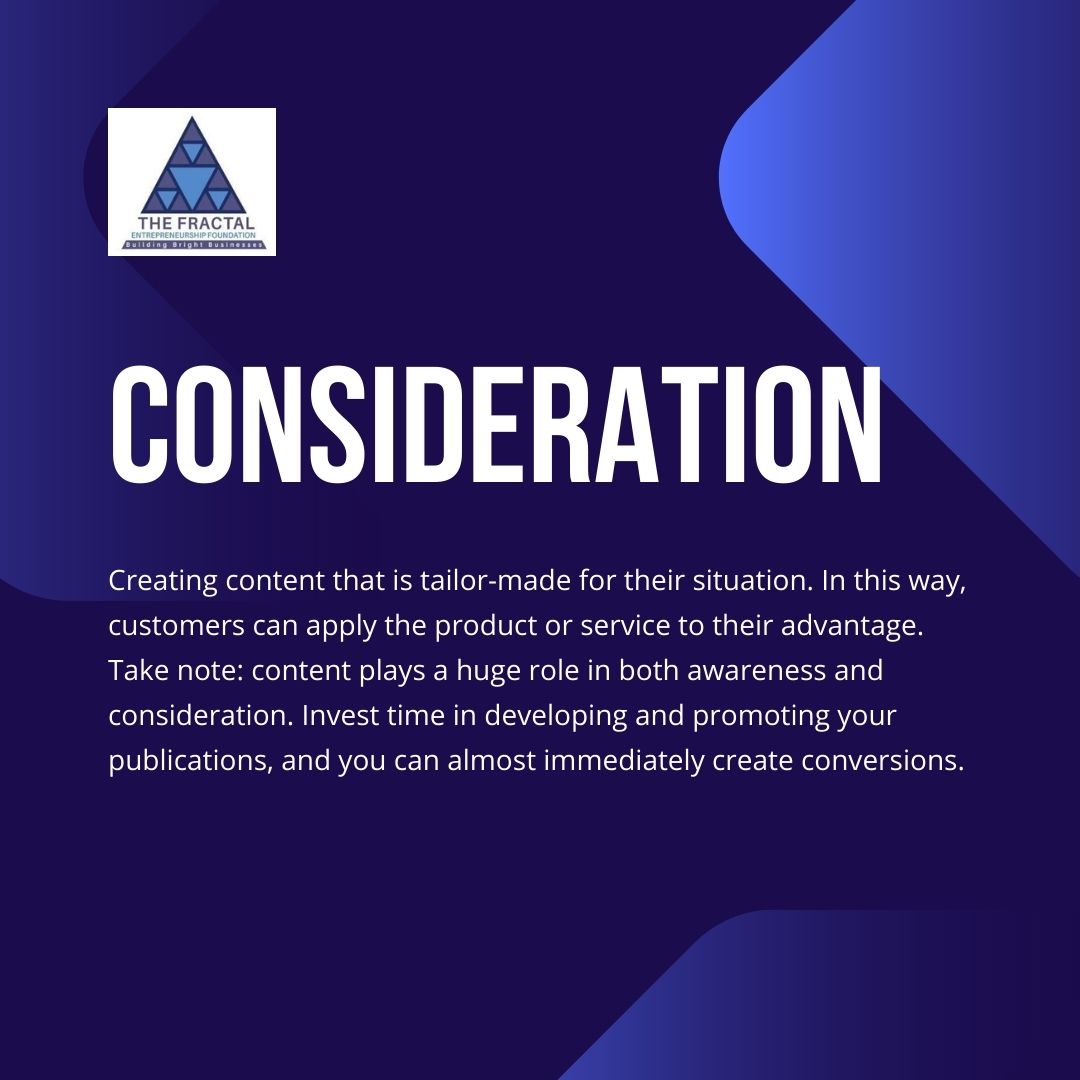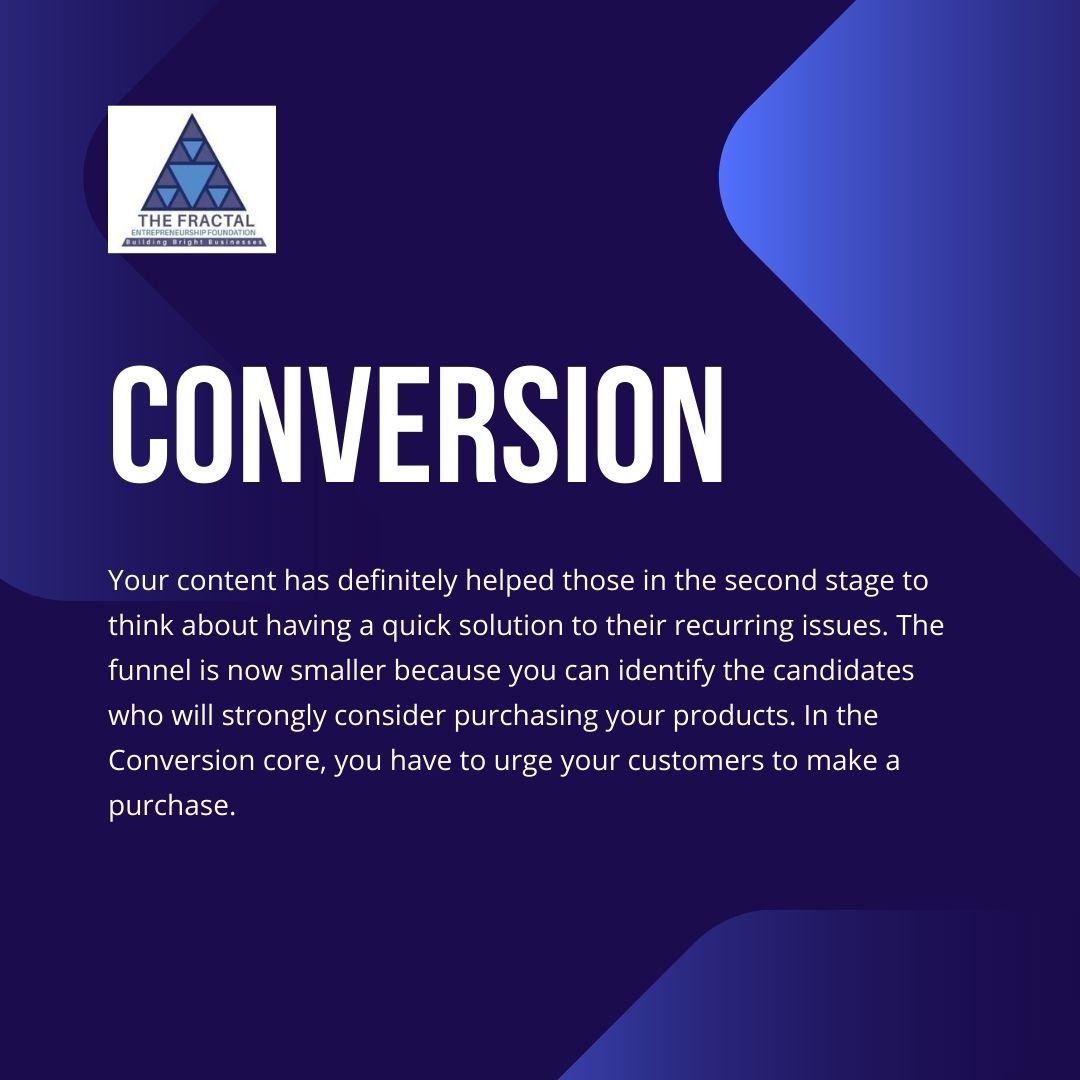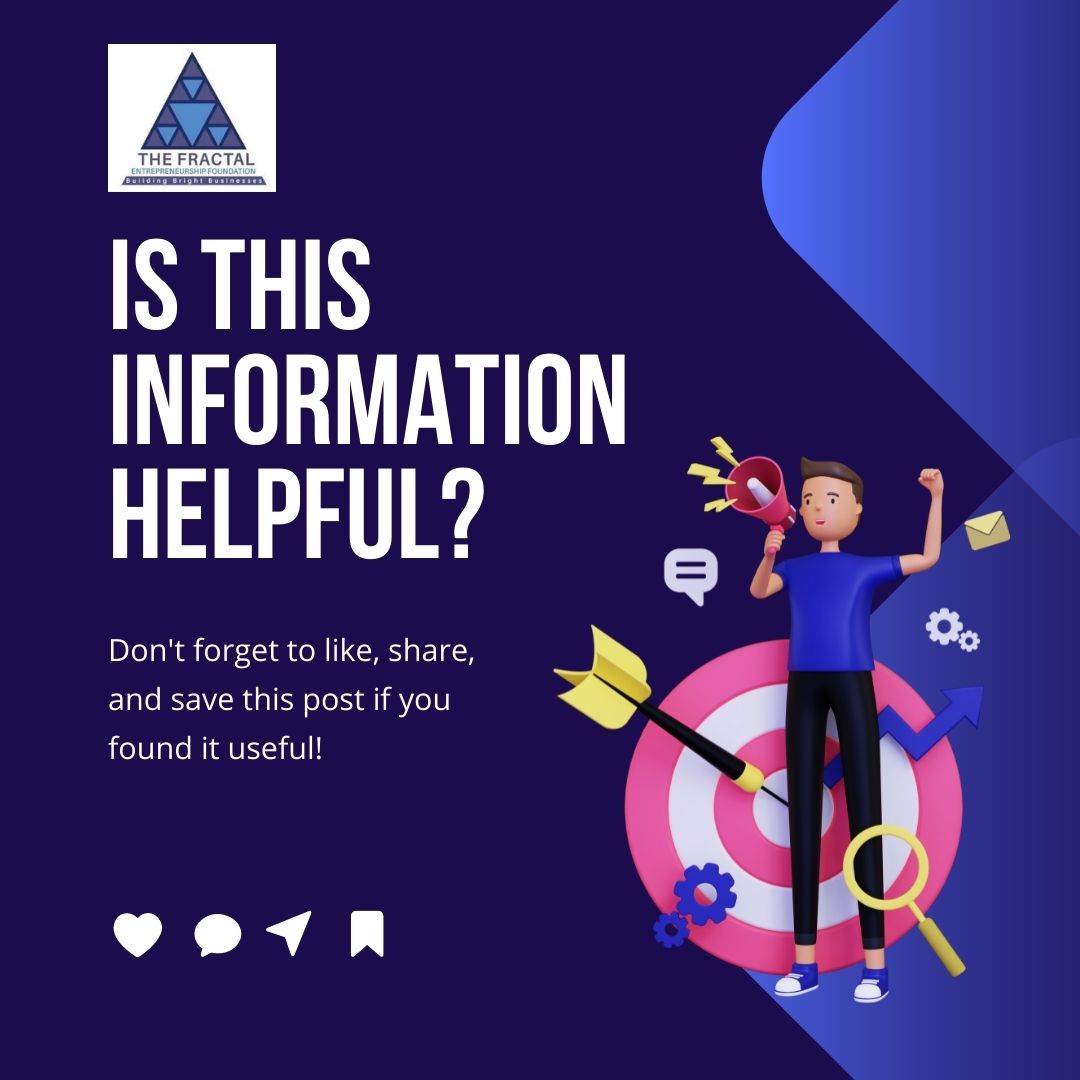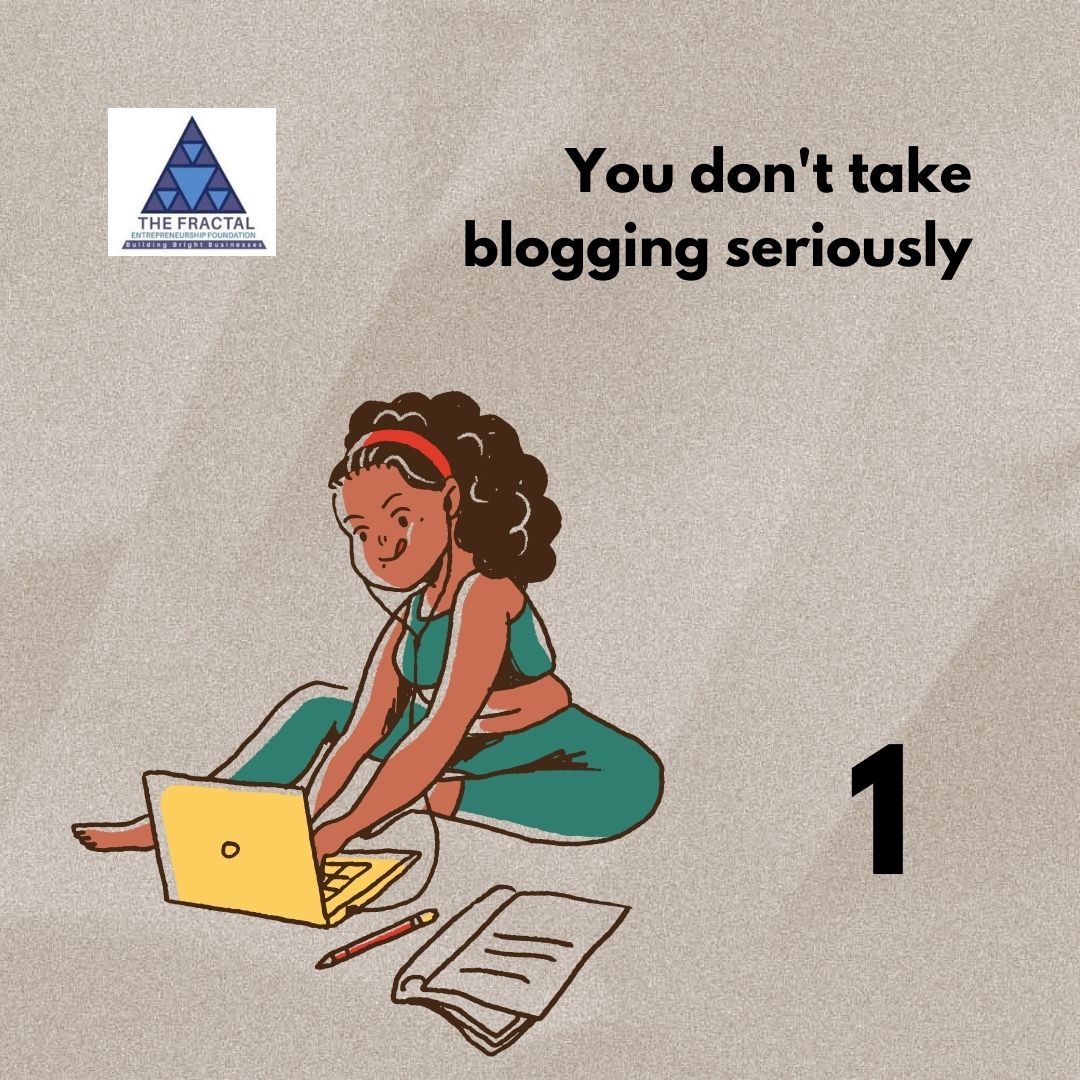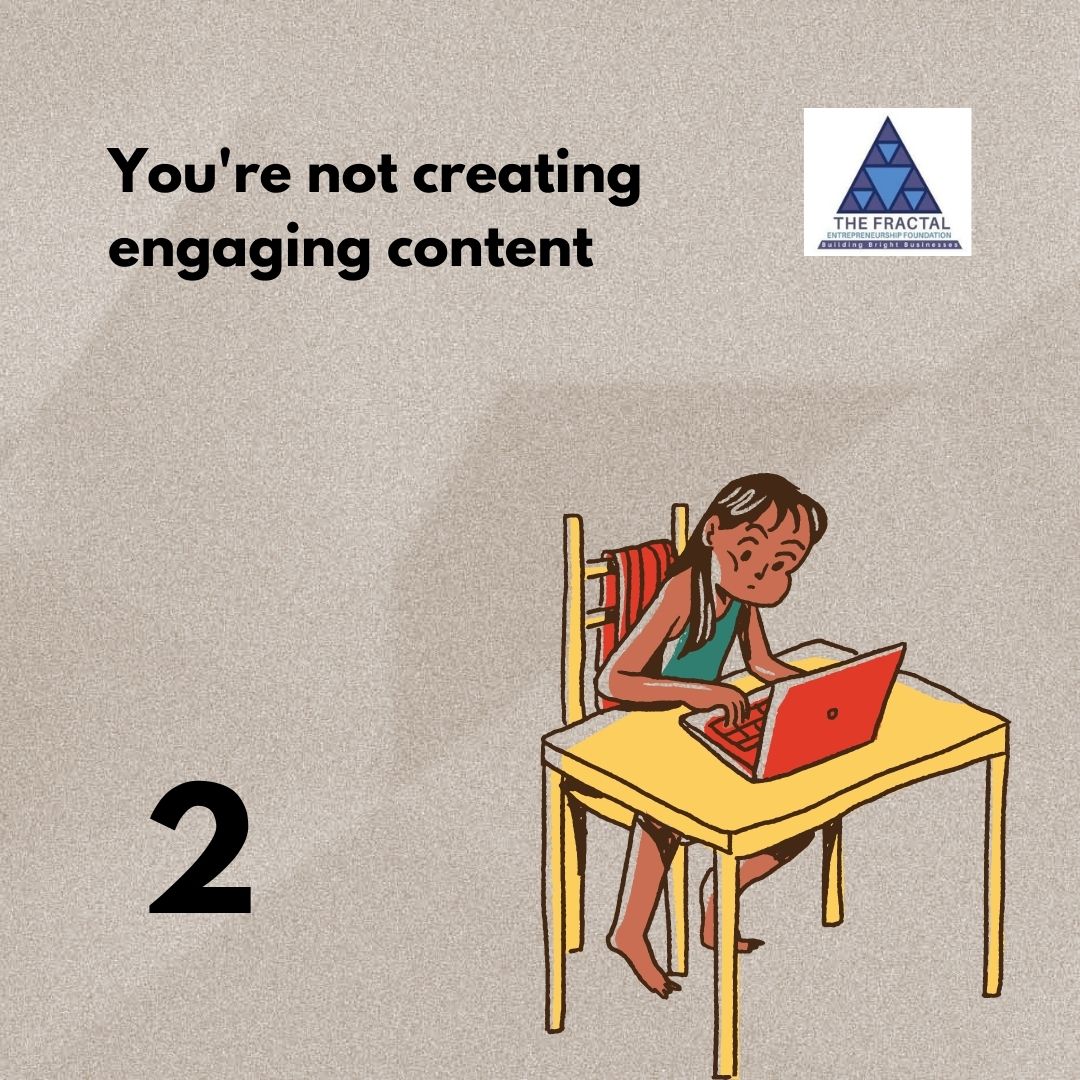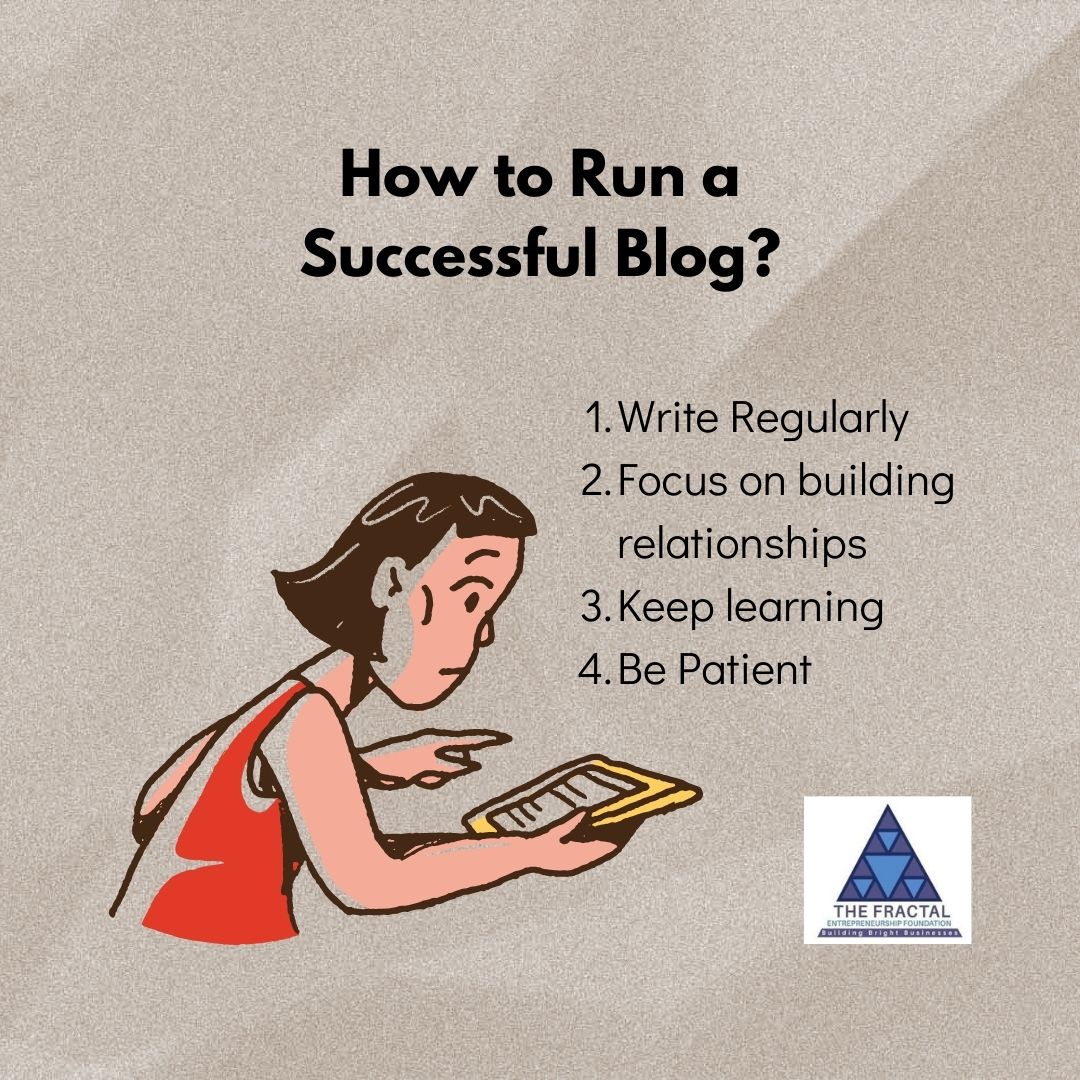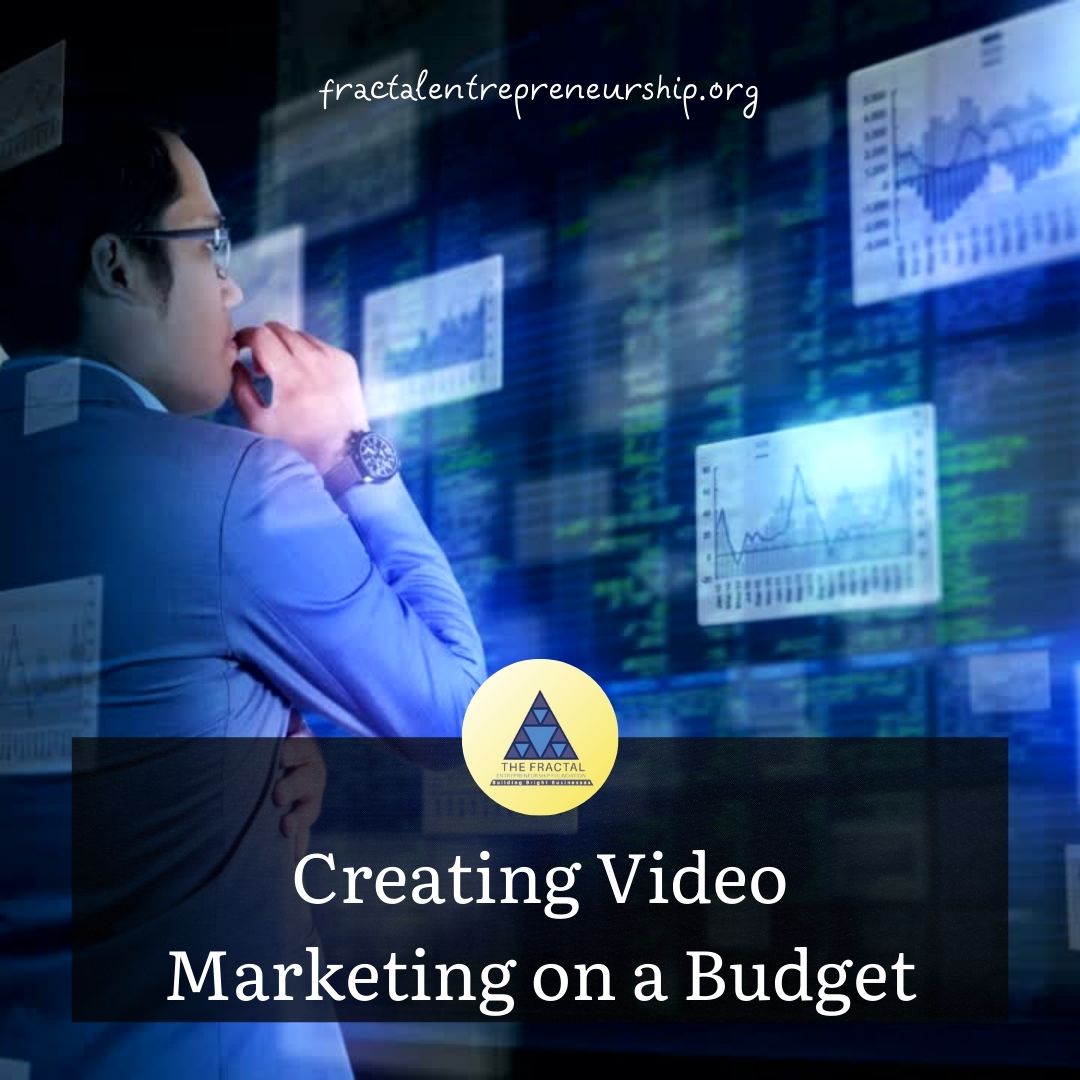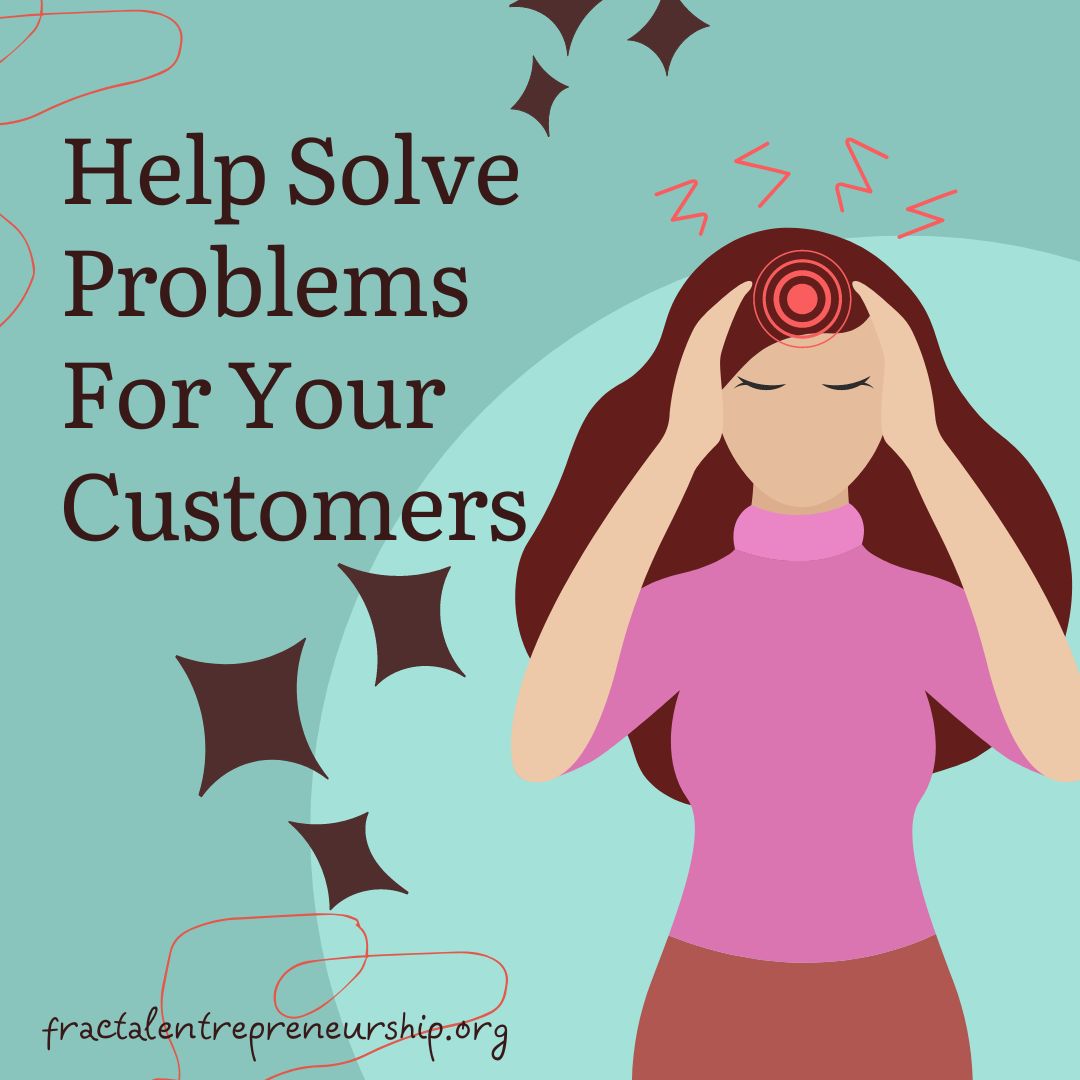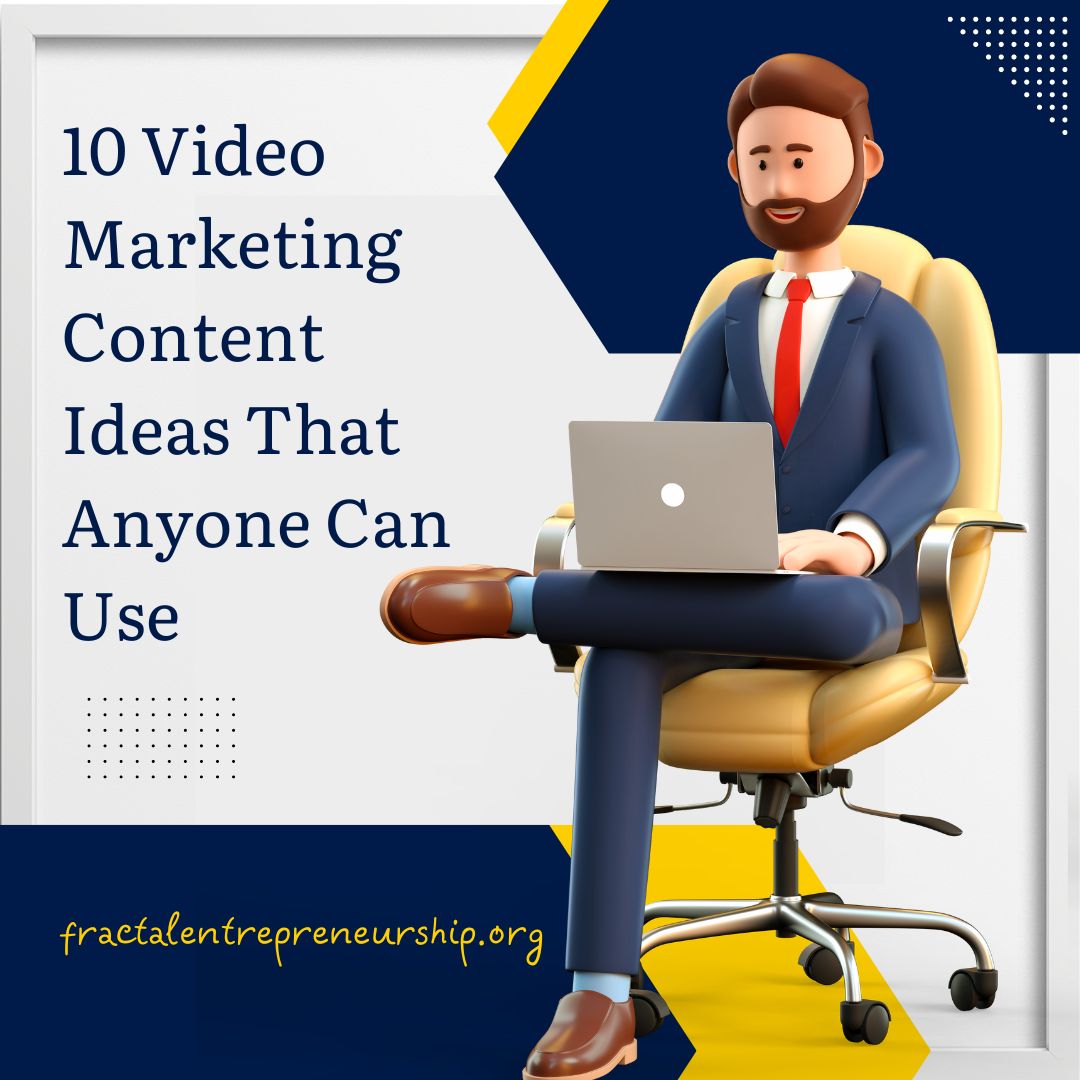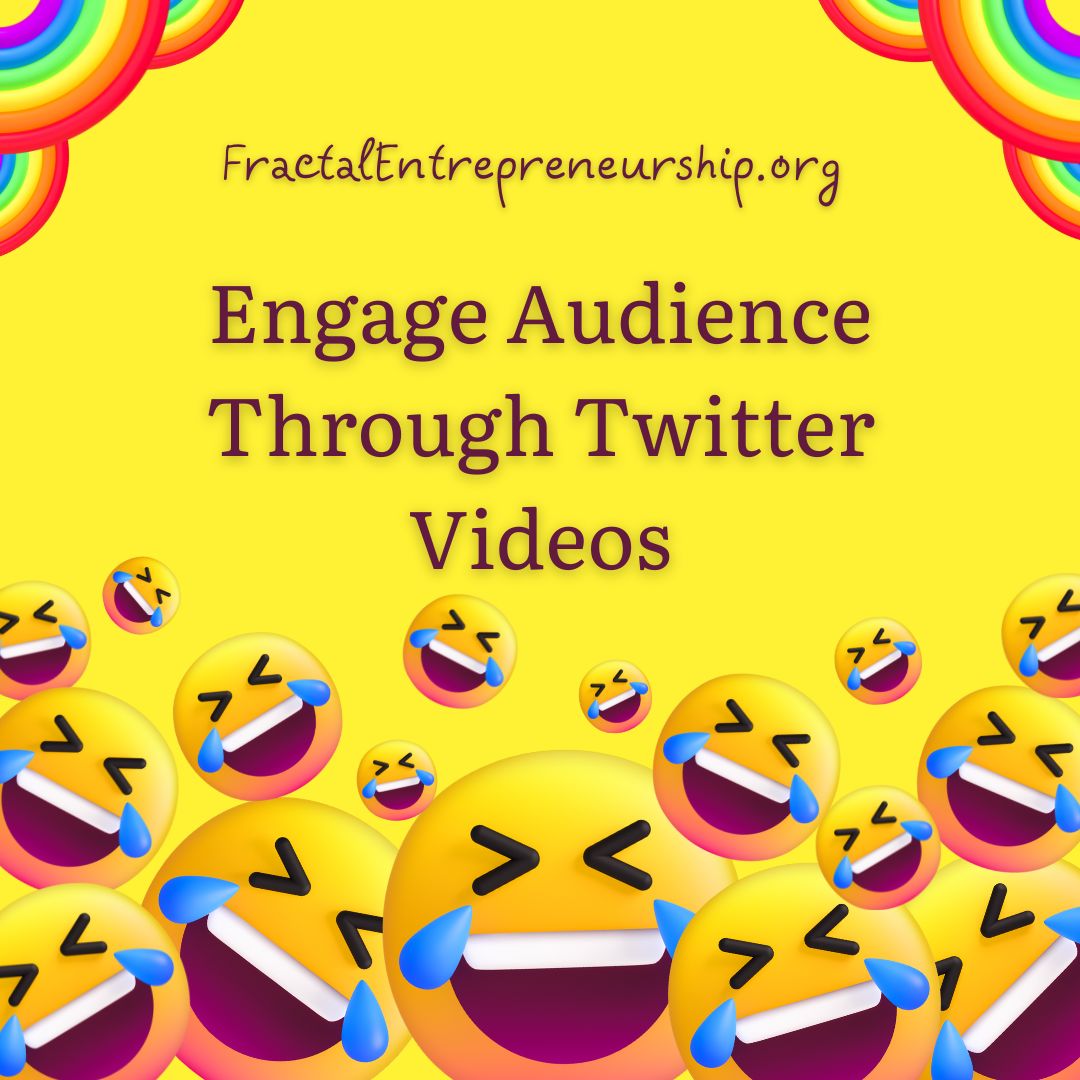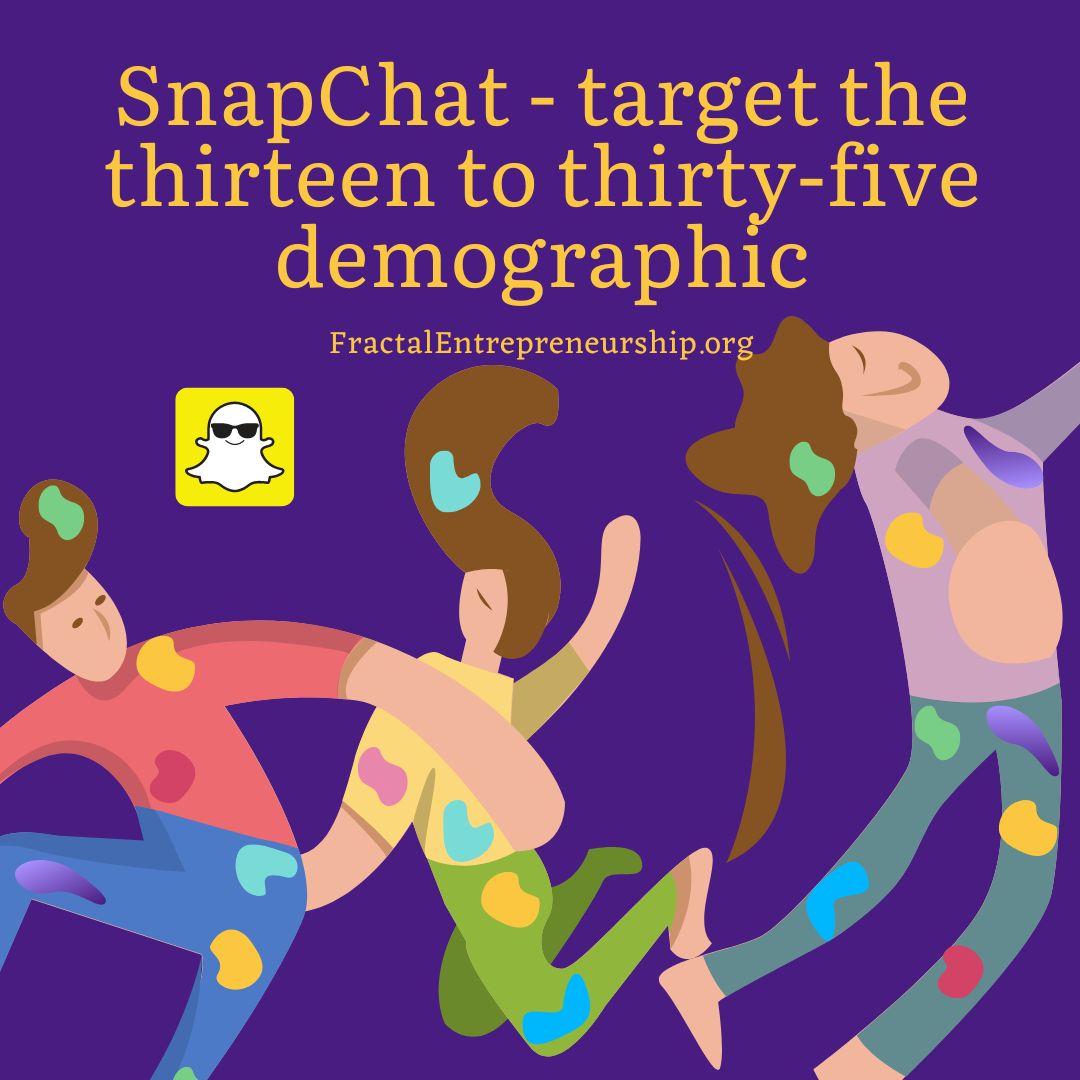What Is SEO / Search Engine Optimization?
Search engine optimization (SEO), sometimes called “search engine marketing,” is the practice of optimizing webpages to improve their rankings in search results. While SEO used to mean just getting your site listed on major search engines like Google, Bing, Yahoo!, and AOL, today there are many different types of SEO techniques to help boost organic search traffic, leads, and sales.
The goal of SEO is to make sure that when someone searches for something online, your website appears near the top of the list. There are many ways to do this, including writing high-quality content, having a well-optimized domain name, and building link profiles.
How does SEO work?
Search engines are powerful tools used to answer questions, solve problems, and make life easier. They do it by crawling the Web, reading billions of pages, analyzing the data they collect, and then returning relevant results to people around the world. This process happens quickly and efficiently, because search engines rely heavily on automated systems called “bots.” These bots follow rules set forth by the search engine companies themselves, which dictate how the software crawls the Internet and analyzes the data collected.
The good news is that there are many ways to optimize your site for search engines, and the best way depends on the type of question you want answered. For example, if you’re trying to rank highly for a broad term like “best mattress,” you’ll need to focus on providing high-quality content across different types of content. If you’re trying to rank for a specific product name, you’ll want to optimize for that keyword phrase. But even within broad terms, you still need to know which keywords to target.
In addition to optimizing for the words people actually enter into search boxes, you can also consider targeting longtail keywords that don’t necessarily mean much to most people, but are often searched more frequently than shorttail keywords. Longtail keywords tend to have lower competition, which makes them easier to rank for. You can also create content specifically targeted at longtail keywords, which helps improve your rankings.
Why is SEO important for marketing?
Where do you bury a dead body safely? In the second page of google search results.
The majority of search engine users click one of the top five search results.
SEO helps you to get higher rankings in search engine results. Search Engine Optimization (SEO) is a fundamental part of online marketing because people conduct trillions upon trillions of searches every year. Often, those searches are conducted with commercial intent – searching for products and services – and search is often the primary source for digital traffic.
Google’s ranking algorithm changes regularly to ensure that it delivers relevant results to searchers. These algorithmic changes are designed to deliver better results for users, while also ensuring that companies don’t unfairly manipulate the system.
A key component of Google’s algorithm is PageRank – a measure of how well a site ranks organically based on authority and quality factors. This authority factor includes things such as the number of incoming links a site receives, whether or not a site is indexed by Google, and the age of the domain name. Quality factors include things like the amount of original content a site provides, the type of content a site provides, and the reputation of the publisher.
The goal of SEO is to rank highly in search engines for keywords related to the product or service you offer. A high ranking allows you to attract more visitors to your website and convert those visitors into customers.
How can I learn SEO?
The best way to learn about SEO is to do it yourself. You don’t have to be a developer or webmaster to understand how to implement SEO strategies. But there are some basic things you must know before jumping headfirst into the world of SEO. Here are five tips to help you get started.
1. Understand the basics
Before diving into the weeds, it helps to start with the big picture. What exactly does SEO stand for? And what does it mean to rank well? To answer those questions, we’ll begin with a definition of SEO.
According to Search Engine Land, SEO stands for “search engine optimisation.” Simply put, it refers to the process of making sure that your site appears high up in the list of search results returned by major search engines like Google, Bing and Yahoo.
2. Know where to find good information
You can read tons of articles online, but most of them won’t teach you anything useful. Instead, you want to focus on finding quality resources that provide actionable advice. This could include books, blogs, eBooks or even YouTube videos.
3. Don’t just follow trends
While it’s tempting to jump on the latest trend when it comes to SEO, this isn’t always the right approach. Trends come and go quickly, so if you’re following one today, you may be missing out on opportunities tomorrow.
4. Focus on building relationships
One of the biggest mistakes newbies make is trying to build their own network from scratch. Instead, they try to work alone, which doesn’t allow them to tap into the expertise of others. Instead, look for ways to connect with other professionals who share your interests.
5. Be patient
It takes time to see any kind of results from an SEO campaign. If you’ve been working on improving your rankings for months without seeing progress, it might be time to consider hiring someone else to take over the project.
Having said these, let us walk you through a comprehensive guide to SEO.
Periodic Table of SEO Factors
Search engine algorithms use a wide range of ranking signals. You can find a Cheat Sheet to Google’s 200 (Known) Ranking Factors by HubSpot.
The following periodic table of SEO Factors from Search Engine Land acts as the foundation of SEO.
Comprehensive Guide to SEO
I would like to organize this SEO Course with SEO lessons in nine categories. They are:
- Types of Search Engine Success Factors
- Content & Search Engine Success Factors
- Site Architecture & Search Engine Success Factors
- HTML Code & Search Engine Success Factors
- Trust, Authority, Expertise & Search Rankings
- Link Building & Ranking In Search Engines
- Personalization & Search Engine Rankings
- Toxins & Search Engine Spam Penalties
- Emerging Verticals in Search
Let us learn each step.
1. Types of Search Engine Success Factors
There are four major elements that form the basis for SEO ranking. They are:
- On-page SEO: Content, Architecture, HTML
- Off-page SEO: Reputation, Links, User
- Toxins
- Niche SEO
These four factors work in tandem to rank content. They are work in silos.
On-page SEO: Content, Architecture, HTML
There are many types of success factors that affect the performance of a website in search engines. These are classified under three categories: Content, Site Architecture and HTML code.
On-Page SEO includes all the elements of a website that affect its visibility in search engines. The primary purpose of on-page optimization is to ensure that the content on your website is relevant to the search terms being searched. On-page SEO refers to the work done on your website before visitors arrive. You want to make sure that your site loads quickly, is easy to navigate, and that it displays information clearly. You should use keywords throughout your content and ensure that there is no spelling or grammatical errors. If you do not take care of this aspect of your business, then you may lose traffic to your competitors who do.
Off-page SEO: Reputation, Links, User
Off-Page SEO refers to the work done outside the website itself. It includes things like building backlinks (high-quality backlinks) to your site, submitting articles or press releases about your business, and using social media sites to share information about your business. Off-page optimization helps search engines understand what content should rank higher in search results.
Toxins
Search engine optimization (SEO) is the process of improving your website’s ranking in search engines like Google. However, there are certain things that can negatively affect your site’s rankings. Some of these are called “seo toxins” or “black hat seo.” They are techniques used to manipulate search results. Here are a few examples of common SEO toxins:
- Using too many keywords in a page title or meta description
- Placing links to websites with low quality content
- Adding hidden text to pages
- Creating duplicate content
- Improper use of HTML tags
- Buying links from blackhat seo companies
- Having a poor user experience
- Failing to update your website regularly
- Poorly written content
- Poorly optimized images
- Using spammy anchor texts
- Using illegal software
White hat SEO is a legitimate way to improve your site’s ranking. There are many ways to achieve white hat SEO. One of them is by following the guidelines set out by the search engines themselves. Another way is by hiring an expert to perform the necessary tasks for you.
SEO Niches
Search engines, particularly, Google, has begun to favor niche websites over generic websites. Define your niche and write content around the niche topics. More focused you are about the content around the niche, more easily you will start ranking on top of search engine results.
2. Content & Search Engine Success Factors
Content is king. Remember that you are writing for human readers. In the long run, writing for search engines will fail. Writing for humans is much easier than writing for search engines. Valuable content is the most important factor for any successful website. Whether it is blog article, news article, product review or anything else, the content must be valuable to the reader. If you have solid content, people will come back to read your posts again and again. Content is the foundation of all your SEO efforts.
Quality of Content
In order to get high ranks in search engines, you need to create good quality content. Quality content means that your content is unique, informative, helpful, interesting, well researched, etc. Good content attracts visitors and keeps them coming back. Poor content does the opposite. So, if you want to succeed in SEO, you need to focus on creating great content.
What constitutes high quality content?
Well, it depends on your industry. But generally speaking, it is content that answers questions, solves problems, provides solutions, educates, entertains, informs, inspires, motivates, etc. Google’s search quality evaluator guidelines says the following.
Quality content should be:
- informative
- accurate
- comprehensive
- clear
- original
- professionally presented
- unique
- in-depth
- well-cited
E-A-T Signals
Google wants to see relevant, useful, timely, original content. The E-A-T signals are as follows:
Expertise – Is this person an expert in his/her field? Does he/she know everything about the topic?
Authority – How authoritative is this author? Has he/she published books, papers, etc.?
Trustworthiness – Is this person trustworthy?
Content is the cornerstone of every online business. It is the lifeblood of your website. Without quality content, no one would visit your website. You cannot expect to rank highly in search engines without having quality content.
Research keywords
Researching keywords is another way to improve your rankings. Researching keywords can be done by using keyword research tools like SEMrush, Ahrefs, Google Keyword Planner, Ubersuggest, etc. These tools allow you to discover which keywords are already being searched by your target audience. Once you have discovered these keywords, you can then optimize your content around those keywords.
Keywords are extremely important when optimizing your website. They are the building blocks of your content. When you use keywords correctly, you increase the chances of getting found by potential customers.
Keyword research gives you insights into how many people are searching for certain terms, which helps you determine whether or not you should include those words in your content. For example, if you sell organic food, you might decide to include “natural food” in your content since there are thousands of searches per month. However, if you sell healthy snacks, you may decide against including “sugarless biscuits” in your content because only a few hundred people are searching for that term each month.
Keyword research shows pain points of your audience. If you notice that most of your traffic comes from a particular region, you can write online content specifically for that area. Or, if you notice that most of the traffic comes from mobile searches, you can write content that is optimized for mobile viewing.
Search volumes
Search volume refers to the number of times a given keyword has been searched for over time. It tells you how much interest there is in a given keyword. A higher volume indicates that there is greater demand for a product or service than for other products or services. Many keyword research tools provide the number of searches per month for your keywords. Keyword planner in Google adwords is by far the best tool.
Select keywords that have a decent volume per month. If your keyword has low search volume, I suggest you go for new phrases or topics.
Having selected keywords with decent volume, how would you know if you can succeed with your keywords?
Search difficulty
I rely upon Ubersuggest to provide me with search difficulty. I like to go for search difficulty of less than 35. Higher the number more the difficulty is to rank on first page of search results.
Search intent
Search Intent is the reason why someone visits your website. Search intent is the reason why someone clicks on your link in Google. There are four types of search intents:
Navigational – A navigational search is when someone is looking for information related to a product or service. For example, if someone were looking for a new car, they would type something like “new cars” into Google.
Informational – An informational search is when someone is seeking general information. For example, if a user wanted to learn more about the history of the United States, they would type something along the lines of “history of the US” into Google. In this case, the searcher is looking for general information.
Transactional – A transactional search is when someone is trying to buy something. For example, if an individual was looking to purchase a new laptop, they would type something into Google such as “laptop” or “buy laptop”.Local – A local search is when someone is searching for a business nearby. For example, if one were looking for a restaurant near them, they would type something such as “restaurant near me” into Google. Local searches are becoming increasingly popular, especially among consumers who want to save money.
You need to understand the difference between these four types of search intents. If you want to get better at SEO, you need to know the difference between them. The easiest way to find the search intent is to visit Google.com and search for the keyword and study the results. Google will tell you the search intent of the person who most often search for the keyword. Google keyword tool will also help you understand the search intent as it groups related search key terms.
If you do not understand the search intent, you cannot create relevant content. It is very easy to make content that appeals to everyone. But, if you want to rank well for a specific search intent, you must focus on
You need to make sure that your content answers the questions that your audience has. If you don’t answer their questions, they will leave your site and never return.
Keyword Density
Another thing that you need to do is make sure that your content contains enough keywords. There is nothing worse than having a piece of content that has too many words but not enough keywords. That makes your content look unprofessional and spammy. Make sure that you include at least 3-5 semantic keywords per 100 words.
Semantic keywords
When writing your content, try to think about how people will actually type your keywords. For example, if you were searching for “best healthy food for diabetics”, you wouldn’t type “diabetics food best”. Instead, you would type “best diabetic food”. If you write your content in such a way that it sounds natural, it will be easier for readers to understand. Search engines are getting better at understanding natural language. They can even read human speech! So, by using natural language, you can increase your chances of being found by search engines.
Freshness of Content
Search engines love fresh content. When you publish new content, it gives search engines an opportunity to crawl your website. You can use social media sites to share your content. Social sharing helps search engines see your content as fresh.
It is important to keep your content fresh. You may have a library of old content. You should always be updating them with fresh, new content. Even if you only post once every few days, it still counts towards your overall freshness score.
Query Deserved Freshness (QDF)
This is a metric that tells you how long ago a particular page was last updated. QDF is calculated based on the time since the last update and the number of times the page has been crawled.
A higher QDF means that the page has been recently updated. Pages with high QDF scores tend to have more recent content. Supposing there is a new variant of novel corona virus discovered. Google will immediately apply QDF scores to the results. It will give priority to content about the new variant of the virus.
Supposing you wish to sell new set of meals for a local festival, say, Onam. If your product title is ‘Onam Sadhya September 8, 2022’, you have a very high chance of ranking No.1 in Google search engine.
Look for popular trends. Subscribe to Google Trends. Refresh or create fresh content based on popular search terms.
Answers
Answer questions that your audience asks. People who ask questions are looking for solutions. The more questions you answer, the more likely you are to get traffic from search engines. A simple website that I love using for questions research is Answer The Public. I love it because it allows me to enter a phrase into their tool and instantly receive suggestions from Google that contain similar phrases. The best part of the website is it gives me a visual map of the search terms.
Answer as Featured Snippets
Optimize your content for featured snippets. These are snippets of information that appear when someone searches for something related to your content. They are usually displayed above the organic search results.
You can optimize your content for featured snippets by including relevant links and images. Include these in your content and link back to your website.
User’s intent is to find answers to their queries. Make sure that your content addresses those queries.
Keep your questions as H2 or H3 and answers as normal paragraphs. Google shows up to 3 featured snippets as answers to popular questions from any article. Add a FAQ section at the end of every article of yours.
You can also include user generated content like Quora.com or Yahoo Answers.
Include videos for ‘How to’ questions
Video content is one of the most effective ways to engage your visitors. Videos add value to your content. They make it easy for your visitors to digest your content.
Videos are great for answering common questions. They allow you to explain complex topics in a way that is easy to understand.
Videos are also great for providing tips and advice. They allow you to demonstrate skills and expertise.
There are many tools available online to create video content. I recommend that you use Youtube. It is the second largest search engine on the internet and it is free.
Depth of Content
Google wants to show people the most relevant content first. So if you want to rank well for a particular keyword, then you need to write quality content. You don’t need to publish 1000 words articles everyday. But do try to post well researched, deep content that is even only 500 words per day.
Quality over Quantity
Make sure that your content is unique. Don’t copy paste other websites content. Instead, take time to write original content that will benefit your readers.
Write for your reader. Ask yourself: What would my ideal customer/reader think? How could this article improve his life?
Make sure that your content is useful. Provide value to your readers. Give them something worth reading. Let you content be deep enough to provide substantial, unique and valuable information to your readers.
How do you provide valuable content?
Search engine algorithms have evolved. Google has officially announced that it has deploy AI capability in their search engine. So, the key to your success in organic traffic is Competition Research. Find the top 20 results of Google SERPs (Search Engine Result Pages) for your keyword. Build a list of sematic longtail keywords from the top 20 results of SERPs. I love to use an AI tool. Frase is my favorite. You could also try Jasper. Frase builds a map of relevant keywords of blog posts for the search query.
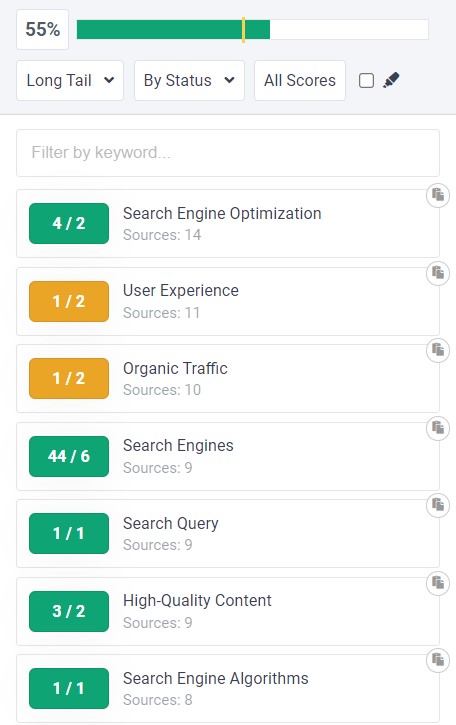
Consider the following when deciding the depth content:
- Audience Search Intent
- Competition mapping
- Content Research
I also love Backlinko’s Skyscraper technique. You would love Brian Dean’s writing if you enjoy reading my articles. I first heard about the technique from his article on How Google Search Engine Works. I follow his example of writing longer than the longest content ranking on the first page of Google. It requires patience, persistence, and hard work.
A SERP visualizer like the one provided by Frase would be an invaluable tool for a content writer.
Multimedia content
You can also include multimedia content such as images, videos, audio files etc. into your content. These types of content are very engaging for your readers.
Images
Images are great for adding credibility to your content. Images give your content a professional look and feel.
Images are also great for improving readability. If you’re using a lot of text, consider including an image instead.
Videos
Video content is another way to add credibility to your content. Videos are easy to share and get noticed. They are also great for increasing engagement.
Audio
Audio content is great for providing context to your content. Audio helps increase the overall experience of your website.
Content Delivery Network
Multimedia content has hog a huge amount of internet traffic and thus have a toll on your server performance. A (Content Delivery Network) CDN service allows you to store your media assets on a remote server which is closer to your visitors. The CDN service caches your content and delivers it faster to your visitors. If your website is on wordpress then I recommend hosting it on wordpress.com server itself as it comes with Jetpack CDN. If you are running an ecommerce website then Shopify automatically hosts their server using a word-class CDN system that optimizes delivery of content from a server nearest to the end user.
3. Site Architecture & Search Engine Success Factors
I would like to recommend six elements in site architecture that optimizes your content for search engines.
Easy Crawl
Search engines are crawling machines. Call it a spider if you want but it does exactly what its name says. It crawls through websites looking for information. When it finds something interesting, it saves it in a database.
This means that if your website is not crawlable, you won’t rank well in search engines. There are many reasons why your website might not be crawlable. Some common ones are:
- Your website uses Flash technology.
- Your website is built using tables rather than div tags.
- Your website doesn’t use HTTP protocol.
- Your website is too heavy.
- It is infected with virus.
- Some server scripts blocking the search engines.
- Uses Java or server side scripting that do not render the website properly.
If any of these issues apply to your website, you need to fix them before you start optimizing your content.
If your website is not crawlable by search engines then you will never rank well in search engines. In order to make sure that your website is crawlable by search engines you need to ensure that your website follows web standards. Web standards are set by W3C (World Wide Web Consortium).
One way to tell the search engine crawler is to provide a map of your content on your website.
Sitemap
A sitemap is a file that lists out all the webpages on your website. You can create one yourself or you can hire someone to do it for you. Google provides a free tool called Google Sitemaps that you can use to generate a sitemap for your website. You can submit this sitemap to Google and other search engines to let them know that there’s new content available on your website.
Amit Agarwal maintains a host of simple to use google tools. His sitemap generator tool is easy to use.
Mobile Optimized
Google now ranks mobile sites higher than desktop sites. So if you don’t optimize your website for mobile devices, you’re missing out on a lot of potential traffic.
Majority of search originates from mobile phones. Mobile optimization is important because most people access the Internet via their smartphones.
You can check how mobile friendly your website is by visiting Google Mobile Friendly Test Tool.
Common mistakes in mobile responsive sites are:
- Using images instead of CSS background image property.
- Not having enough alt attributes.
- Having excessive JavaScript code.
- Incorrectly coded links.
- Unoptimized images.
- Redirecting to another URL when clicking on a link.
- No meta description tag.
- Keywords stuffing.
- Use of frames.
- Broken links.
Google has a detailed note on how to Avoid common mistakes when designing for mobile.
Duplicate Content
Content duplication is a major SEO issue. If you have duplicate content on your website, it will affect your rankings negatively.
Duplicate content occurs when two different versions of the same webpage exist on your website. For example, if you have an About Us page, you may have a separate About Us page on each section of your website like Home, Services, Contact us etc.
Canonicalization is the process of creating unique content for every single page of your website. It helps you avoid duplicate content issues. Eventually, though, Google will figure it out for you. Make it easy for search engine by use of canonicals, pagination, and redirects. Avoid duplicate content at least within your own website.
Superfast Speed
Google rolled out website speed as a ranking factor in 2018. The faster your website loads, the better it performs in search results.
There are many ways to improve the performance of your website. Here are some tips:
- Minify JavaScript files.
- Minify CSS files.
- Optimize images.
- Remove unused CSS styles.
- Make sure your server is configured correctly.
- Avoid using Flash.
- Keep your website clean and clutter-free.
Google has a page speed test tool. Use it.. You will get your test results along with recommendations on how to improve the speed of your website. Ideally, your website should load in less than 3 seconds.
Security
On August 7, 2014, Google announced that https security protocol as a ranking factor. In June 2015, Google announced that HTTPS would become a ranking signal on its own. If you want to secure your website against hackers, then make sure you follow these steps:
Install SSL certificate on your domain name. Head over to Let’s Encrypt – A nonprofit Certificate Authority providing FREE TLS (https) certificates to 260 million websites.
Keywords in URL
URLs are very important for SEO purposes. URLs are visible to search engines and humans alike. They tell visitors and search engines which parts of your website are relevant.
A good URL should include keywords related to your business.
If you are interested in ranking for a long-tail keyword, make sure that the exact keyword is in the beginning of the URL rather than at the end of it. Use hyphens to separate words.
For example, supposing you are writing an article on ‘How Native Plants Help The Environment?’. Make sure that your URL of the published page is something like:
https://yourwebsite.com/how-native-plants-help-the-environment
A bad example of the URL without the keyword would be:
https://yourwebsite.com/blog/2022-august-08/native-ecofriendly-greens/
Avoid using repetitive keywords.
Good example:
https://yourwebsite.com/healthy-food-service-in-bangalore
Bad example:
https://yourwebsite.com/food-service-tiffin-service-tiffin-box-tiffin-meals-in-bangalore
Use logical directory structure in the URL to help readers understand how to navigate the pages in your website.
Google recommends a simple URL structure. Read more from their recommendation.
4. HTML Code & Search Engine Success Factors
Search engine understand Hyper Text Markup Language (HTML Code).So, if you have a well-coded website, it can easily rank higher in search results.
Here are four tips to create a great looking website:
- Write clear, concise and error free code. Or simply use a content management system like wordpress that eliminates the need for you to learn HTML coding.
- Use valid HTML5 codes. Keep your WordPress updated to the latest version. Ensure that all plugins are compatible with the latest version of wordpress. You will be fine.
- Use descriptive alt attributes for images.
HTML Titles
Title tags are one of the most important elements of any webpage.
Example of a Title tag:
<title>What is SEO? A Comprehensive Beginner’s Guide</title>
It helps search engines index your webpages. Titles inform the search engine about the contents of each page.
You must write unique titles for every page of your website.
It is recommended to keep the length of the title tag between 60-70 characters.
Title tag should contain keywords related to your article.
There are a bunch of tools available for generating titles. Frase has a Title generator AI tool. Here’s a sample output for the keyword SEO from Frase.
SEMRush also a FREE title generator tool. Here’s a sample output from it.
Meta Descriptions
Meta descriptions are snippets of information that appear below the title tag in search results. They’re typically 160 characters or less. Meta descriptions are very useful because they give Google additional context about the page. Meta descriptions are not visible to visitors. But, they do play an important role in increasing CTR.
They tell Google exactly what the page is about. So, when someone searches for “which is a healthy lunch to eat”, meta description of the page tells Google that this page is about the healthy lunch to eat.
Google offers some help on how to write quality meta description. As you can see, the focus is on quality meta description.
Structured Data & Schema
Google Search tries its best to understand the content of each web page. If you want to help Google improve your ranking, please include structured data on the page so they can understand its content better. Structured data is an organized way to provide information about a web page and classify its contents. For example, on a recipe site, structured data describes the ingredients, cooking time and temperature, calories, etc. Structured data tells search engines about your data in machine understandable language.
Google has a detailed guide on how you can use structured data in your article.
Google understands structured data in the following formats:
- JSON-LD (Recommended), A JavaScript notation embedded in a <script> tag in the page head or body.
- Microdata, An open-community HTML specification used to nest structured data within HTML content.
- RDFa, An HTML5 extension that supports linked data by introducing HTML tag attributes that correspond to the user-visible content that you want to describe for search engines.
To learn more about structured data, I recommend that you read beginner’s guide to structured data, and Full hierarchy of Structured Data.
Remember Google has a tool to test Structured Data.
Headings
Heading tags are used to describe the main topic of your page. H1, H2, H3 etc. are the different types of heading tags.
H1 is the largest heading tag. It is usually placed at the top of the page. There must only be one H1 heading tag in a web page. Too many H1 tags will send confusing signals to the search engines.
H2 is the second largest heading tag. It comes after the H1 tag. You can have multiple H2s per page.
H3 is the smallest heading tag. It is used to describe sub topics. It is a good practice to have a few H3s under each H2.
I also sometimes use H4 tags as key bullet points under H3 heading. It is not mandatory to have H4s.
Here’s an example of heading tags from H1 to H4 in a single web page.
As you can see, headings make it easy for users and search engines to navigate your content easily.
Content Shift
A cumulative layout shift occurs when there is a significant change in the structure of a website. The more the layout shifts, the worse the user experience will be. As you browse a website, sometimes, have you noticed that the content changes? That means the layout of the website has shifted. When this happens, the visitor may get confused and leave the website.
When the layout shifts, Googlebot will flag it as inappropriate and mark your webpage to be weak on core web vitals. It will eventually lower your search ranking. Google is emphasizing in many ways that we must put the reader in mind when we develop content.
For the best user experience, we recommend a CLS score of 0.1 or less. You can read more about CLS score. You can test your web page for CLS Score.
Image ALT Text
ALT attribute helps to identify images. It provides alternative text for image alt attribute. Alt text is very important because it gives additional information about the image.
Alt text should contain the same keywords as the image. But don’t overstuff them. Keep it simple.
Here’s an image with no alt text and with an alt text.
5. Trust, Authority, Expertise & Search Rankings
You trust search engines. In order to gain your trust, search engines must learn to trust your published content. How will search engines build trust, authority and expertise for the world wide content and rank them appropriate for the search users?
Search engines need to know who you are and how trustworthy you are. They need to know if you’re an expert in your field. If you’re an expert, then you’ll probably have a lot of high quality links pointing back to your website. These links will help search engines understand that you’re an expert in the subject matter.
If you’re an expert, people will link to you naturally. So, you won’t need to do anything special to get these links.
If you’re not an expert, you’ll need to work hard to get those links. You’ll need to write articles, guest post, comment on blogs and forums, etc.
Authority
Google wants to show authoritative websites first in its results. To become authoritative, you need to earn the trust of other experts in your niche.
To earn the trust of other professionals, you need to publish high quality content. You need to share your knowledge by writing blog posts, guest blogging, commenting on forums, answering questions on Quora, etc.
Google assesses authority on a page by page basis. It looks at things like:
• Page load time
• Content freshness
• Links from other websites
• Backlinks from other sites
• Domain age
• Number of indexed pages
• Quality of the content
• User engagement
• Social signals
• Reputation
Expertise
Experts are usually recognized by their reputation. People trust experts because they’ve seen their work before.
Experts are usually recognized by their name. For example, if you’re an SEO specialist, you might use “SEO Specialist” as your company name.
People trust experts because they’ve heard good reviews about them. People look for authoritative content that received good review star ratings.
Experts are usually recognizable by their credentials. For example, if I’m an SEO consultant, I’d include my certifications (e.g., SEMPO) on my profile.
In addition to earning the trust of other experts, you need to prove that you’re an expert yourself. You need to publish high quality original content.
In order to publish high quality content, you need to invest time and effort into researching topics related to your business. You need to create unique content that solves problems for your readers.
Reputation
Google uses reputation to determine which websites are most relevant to a given query. The higher your reputation, the better chance you have of appearing in Google’s top results.
Google has been known to penalize websites that are too spammy. That means that if you try to game Google by using black hat techniques, you could lose rankings.
Quality Content
There are two types of content:
1. Original content
2. Repurposed content
Original content is written from scratch. It includes new ideas, fresh insights, and original perspectives.
Repurposed content comes from another source. It usually contains some kind of value added. For example, repurposing an infographic would include adding relevant data points and statistics.
It’s better to use original content than repurposed content. Because repurposed content doesn’t add any value. And it may even hurt your SEO efforts.
Trust
You can build trust through social media. But you can only do so much. If you want to really build trust, you need to produce great content.
Google wants to see websites that are easy to read and use. So, don’t design your site with tiny fonts and lots of images. Make sure that your website loads quickly.
If your site isn’t user friendly, people will leave. They’ll go somewhere else.
And when they do, Google won’t rank your site highly anymore.
User Engagement
Users engage with websites that are useful. Users click on links that lead to information that helps solve their problem.
So make sure that your website provides real value to its visitors.
Remember that Google also contracts human evaluators to rank search results.
Social Signals
Social signals are important because they show how popular your website is.
For example, Facebook likes and Twitter followers tell Google that your website is popular.
So, make sure that you’re actively engaging with your target audience.
Citation
A citation is a reference to something outside of your own website. For example, if someone cites Wikipedia, they’re saying that they got their information from there.
When you cite sources, you’re showing that you’re trustworthy.
That’s why citations are important.
Tools like Citation Machine help to build and maintain citations.
6. Link building & ranking in search engines
Link building is one of the most effective ways to improve your organic traffic.
But before we get started, let me explain what link building is.
Links are simply connections between different webpages. Links are created when someone shares a webpage on their blog or social media account. The more times a webpage gets shared, the more likely it is to appear in search results.
This is called backlink building.
Backlinks are essential for improving your SEO.They help Google understand that your website is valuable.And this makes it easier for Google to rank your site.
Now, here’s how to actually build links. First, you need to identify potential linking opportunities. Then, you need to create compelling content. Finally, you need to share your content on other sites.
Value of Links
Not all backlinks are equal. Some backlinks have more weight than others.
Here’s how to determine which ones are worth pursuing:
1. Backlinks from high authority domains carry more weight than those from low authority domains.
2. Backlinks from trusted websites carry more weight than those coming from untrustworthy sites.
3. Backlinks from older posts carry more weight than newer posts.
4. Backlinks from websites that focus on similar topics carry more weight than those that cover unrelated topics.
5. Backlinks from authoritative websites carry more weight than non-authoritative websites.
6. Backlinks from websites with higher PageRank carry more weight than those with lower PageRanks.
7. Backlinks from websites owned by large companies carry more weight than those owned by small businesses.
8. Backlinks from websites located in countries with high English proficiency carry more weight than those located in countries with low English proficiency.
9. Backlinks from websites whose owners have been active participants in the same industry as yours carry more weight than those who haven’t participated.
10. Backlinks from websites in your niche carry more weight than those not in your niche.
11. Backlinks from websites related to your business carry more weight than those unrelated to your business.
12. Backlinks from reputed news publications carry more weight than comments in a public blog.
13. Backlinks from educational websites (.edu, .edu.in etc) carry more weight.
Let’s look at each step in Link Building in detail.
Identify Potential Linking Opportunities
There are many places where you can find potential linking opportunities.
One place is by looking at your competitors’ websites. You can learn a lot about them by analyzing their backlinks. You could use a tool like ubersuggest backlink opportunities to find websites that are linking to your competing web pages.
Publish valuable content
Once you’ve identified some potential linking opportunities, you’ll want to publish some relevant content.
You can do this through guest posting. Guest posting allows you to post articles on other people’s blogs. It’s an effective way to get backlinks because most bloggers will link to your content if they think it adds value.
Another option is to write a blog post yourself. If you’re comfortable writing, then you can start a blog and write about things that interest you. The beauty of blogging is that once you’ve written something interesting, you can always come back later and add new content.
Another option is to write a white paper. White papers are documents that explain a topic in greater detail than a typical blog post. They usually take longer to write but offer better SEO benefits.
Contact the backlink opportunity
After publishing content, you’ll want to write to the website owner and ask if he/she would be interested in adding a link to your website.
If the website owner agrees, you’ll need to make sure that your content is well written and optimized for search engines. Make sure that you include keywords throughout the content. Also, make sure that you don’t overuse links. Links should only be included when they’re relevant to the content. Make sure that your anchor text is relevant and appropriate.
Anchor Text
Anchors are words or phrases that point to another webpage. Anchor text helps search engines understand which page a link points to.
When creating anchor text, keep these tips in mind:
Use descriptive anchors. Don’t just use “click here” or “read more”. Use terms such as “how to”, “why”, “when”, “where”, “who”, “what”, “which” and “more information”. These types of anchors are easier for readers to click on.
Use keyword rich anchors. Keywords are important for search engines. When using keywords, try to use them naturally. For example, instead of saying “Click Here” say “How To Start a Fractal Entrepreneurship in India“.
- Avoid using spammy anchor texts. Use natural language anchor text.
- Avoid using keywords unnaturally in your anchor text. Use relevant terms and words.
- Avoid generic anchor texts such as ‘Click Here’. Use specific underlined anchor texts that users are used to seeing.
- Avoid using anchor text as click baits. Use it concisely.
Inbound Links | Backlinks
Inbound links are backlinks from other websites. Inbound links are very important for search engines because they tell them how popular your website is.
There are many ways to build backlinks:
Guest Posting
This is one of the best ways to build backlinks. Guest posting lets you share your expertise with other sites. Most bloggers will gladly accept guest posts if they see it adds value to their site.
Write Articles
This is another great way to build backlinks. Write quality articles that are informative and helpful. Include keywords in your articles. You can even create a list of topics you’d like to cover and write about each one.
Social Media Marketing
Create accounts on social media platforms such as Facebook, Twitter, LinkedIn and Google+. Share your content and engage with others.
Link Building
Link building is an effective method of building backlinks. It’s a process of getting other websites to add a link to yours.
Directories
These directories allow businesses to submit their websites for inclusion. The directory owners then review the submissions and decide whether to approve them.
Search Engines
Search engines have their own submission forms. Submit your URL to them. They may not always respond but at least you tried.
Other Ways to Build Backlinks
You can also build backlinks by sharing your content on forums, blogs, groups and communities.
How not to build inbound links?
Avoid
- comment spamming
- link buying
- guest posting schemes
- link exchanges
- content farming
- spamming
- black hat SEO
- keyword stuffing
- using hidden text
- using invisible text
- creating duplicate content
- using too many keywords
- creating lots of low quality content
- writing poor quality content
- sending out mass emails
- using backlinking spiders and automated comment spamming tools
7. User context signals & search engine rankings
Have you noticed that search results vary from user to user and from location to location? Search engines know this and adjust their algorithms accordingly.
Context Signals
Google uses several different signals when determining which result to show first. Some of these si
1. Page Rank (PR)
2. Domain Authority (DA)
3. Trust Flow (TF)
4. Citation Flow (CF)
5. Social Count (SC)
6. Language Detection (LD)
7. Content Quality (CQ)
8. Anchor Text (AT)
9. Internal Link Structure (ILS)
10. Site Architecture (SA)
11. Authoritativeness (AU)
12. Breadth/Depth (BD)
13. Semantic Similarity (SS)
14. Keywords (KW)
15. Relevance (RE)
16. Freshness (FR)
17. Time Decay (TD)
18. External Links (EL)
19. Landing Pages (LP)
20. Mobile Friendliness (MF)
21. Geolocation (GL)
22. Open Graph Data (OGD)
23. Schema Markup (SM)
24. Structured Data (SD)
25. Video Indexing (VI)
26. Image Alt Attribute (IAA)
Country Specific Context
Google has been known to use country specific signals to rank pages. For example, if you’re planning for your honeymoon and searching for “best honeymoon hotels in bali” Google will try to find the best hotels in Bali before a listing in some other city near Bali. Google has gotten better with country specific context since it tracks your location set in your browser.
Search engines understand country specific context too. For example, if you are searching for ‘Last Night Football scores’ from your location in India, the SEPR results will show scores of soccer matches in and around or involving India. If you are searching for the same in, say, New York, it will show results of American Football (NFL) matches. Similarly, you will get country specific results in Australia.
Ensure that your content is tuned to the target audience of your country, culture and language. If you have content in multiple local languages, inform Google of the localized variants.
Local Context
If you are searching for ‘Tiffin Service Near Me’ you are likely to get tiffin service companies near your present location. Google automatically adjusts the results according to the current location settings identified by the browser. You can, of course, go to the browser settings and change your current location if you so desire.
Google My Business
If you would like to appear in the local search results then please enter your details in Google My Business.
You may need to wait up to 72 hours for the changes to take effect. Once you’ve entered your business information into Google My Business, you’ll see an indicator next to your listing that shows whether or not your listing was found by people who searched for your business name. Add location details, capture user rankings, customer reviews, and photos to ensure that your business is up to date and showing all relevant information.
Search History as Context
When you search for something, Google remembers this query and uses it to determine relevant sites to your future searches. The more times you search for something, the more relevant your website becomes. So, when you search for “honeymoon destinations”, Google might suggest related terms such as “Bali Honeymoon Packages” or “Honeymoon Destinations In Indonesia”.
This is called Search Suggestions. It’s one of the most powerful ways to improve your SEO.
Keep this in context and build content around these queries.
Positive User Experience
The goal of search engines is to send search users to the most relevant web pages that give them a positive user experience. A good user experience means that the searcher finds the answer to their question quickly and easily. Users don’t want to spend time looking through irrelevant websites. They want to find exactly what they are looking for.
A good user experience is achieved by providing high quality content and clean, well designed sites. These things make sure that users can find what they are looking for without having to sift throughlots of irrelevant material.
User Experience Is Key
In order to achieve a good user experience, you must first create great content. Then you must design your site to be easy to use and navigate. Finally, you must optimize your site for search engines.
Optimizing your site for search engines involves ensuring that your site has a clear structure, that it loads fast, and that it contains relevant and useful content. All of these elements will contribute to creating a better user experience.
Follow the KISS principle in design your User Experience. Keep it simple, stupid! While your users are intelligent human beings, try to define your user experience levels before writing your content. If they are beginners then you may want to write content for dummies. If they are expert level users, then, you may want to consider writing advanced level content.
Search Intent
Google understands what type of search you’re performing. For example, if you search for “best dog food”, you probably have a pet at home. You’re searching for a product that will feed your dog.
Google knows this and will show you products that match your intent. If you perform a different kind of search, you’ll get a different set of results.
For example, if you were searching for “dog training tips” you would expect to see articles that teach you how to train your dog.
If you do a search like “how to train my dog”, you’ll likely receive a list of dog training videos.
Your job is to understand what types of searches your audience performs and then write content that matches those intents.
Types of Search Intents
There are three main categories of search: informational, navigational, and transactional.
Informational Searches
These are searches that require information. For example, if I’m trying to learn about a new topic, I’d search for “How To Learn About…”
Navigational Searches
These searches are usually performed when someone wants to go somewhere else. For example, if someone wanted to visit place B from A, they might search for “malleswaram to koramangala”.
Transactional Searches
These are the searches that people perform when they need something done. For example, if my friend needed me to hire a gardener for setting up a home garden, she would ask me to search for “hire a gardener”.
Commercial Searches
If you are looking to buy fruits from a local store near you, then you would look for specific search for ‘vegetables and fruits delivery’.
Search engines are become smart in identifying search intent of the users. Supposing you are searching for ‘tallest buildings in bangalore’, Google will automatically list the top buildings with their heights.
Avinash Kaushik walks you through how Google identifies search intent. Watch this video.
8. Toxins & search engine spam penalties
Toxins are dangerous.Toxic ideas can cause severe damage to your website’s reputation. So, it is important to avoid them.
Spammy Links
Spammy links are links which are not related to your business but appear as if they are related to your business. These links are often placed by spammers who use automated software to generate thousands of such links.
These links are called toxic links because they can harm your website’s reputation. They can even result in an instant penalty from Google.
So, it is very important to keep these links away from your website.
Here are some ways to identify and remove spammy links from your website:
- Check out your backlinks.
- Use link analysis tools to check for any suspicious links.
- Remove any links pointing to your website.
- Monitor your website’s performance over time.
- Keep an eye on your competitors’ websites.
- Do a manual review of your website.
- Run a webmaster tool like Screaming Frog.
- Get rid of any comments that contain links.
- Delete any blog posts that contain links.
- Report any suspicious links to Google using Webmaster.
Cloaking
Cloaking refers to showing certain parts of your website to search engines and certain parts of your website to users. It is done to make sure that only relevant results show up in search results.
You can get penalized for cloaking. You can lose traffic and rankings.
Google has recently started cracking down on cloaking. If you have been doing it, you may want to stop now. Cloaking is a deliberate act of subverting the search engine results.
Cloaking is against Google Guidelines.
Let your intent not be suspicious in the eyes of searchbots. Google webmaster guidelines are clear about what forms cloaking and what is not a violation. Sometimes, you will need to use server side scripts such as Javascripts to deliver some specific content to bots. Google has specific guidelines for Javascripts. At present, they are turning a blind eye to such server side scripting as long as they decide that your intent is not malicious.
Keyword Stuffing
Keyword stuffing is when you stuff too many words into a single keyword phrase or into a web page to mislead search engines to think your web page is specific to the target keyword. The idea behind keyword stuffing is to increase the number of times a particular word appears in a document.
This practice is frowned upon by search engines because it makes your pages less readable. Search engines don’t want to index pages full of irrelevant or repetitive keywords.
It is best to write natural sentences. Use synonyms whenever possible. Don’t repeat keywords unnecessarily.
Focus on user intent. Deliver quality content and add value to your readers. Let them learn something unique from your content. Let the content is unique. Let it not be available anywhere else. Let your audience be impressed with your content. Search engines will love content that are loved by their search users. Remember that the search bots have AI capability, too. Given time, they will figure out if your content is authentic and useful.
Google is quite strict about keyword stuffing.
Content Piracy
Plagiarism is illegal. Search engines frown upon this. They consider it unethical. Content piracy is when someone copies another person’s work without permission.
If you copy other people’s content, you risk getting caught. You risk losing your reputation. You risk being banned from Google.
Search engines do not allow plagiarism. They take action against sites that engage in content piracy.
They ban those who engage in content piracy. They remove pirated content from their indexes.
They report these sites to authorities.
They blacklist these sites.
They even block access to these sites.
In short, they punish those who engage in content theft.
Google and it’s sister search engine Youtube have cracked down on copyright piracy and continue to report astounding insights.
On Feb 24, 2011, Google announced a big algorithm update to their search engine that they claim affected 11.8% of search queries. The update was aimed at finding more high-quality sites in search.
Link Schemes
A link scheme is an attempt to manipulate the search results of a search engine. Link schemes can include:
- Buying and selling links in order to buy PageRank
- Exchanging goods for creating backlinks
- Sending a free product in order to buy backlinks
- Link exchanges that offer to link each other’s websites
- Large scale article marketing
- Large scale comment spamming
- Creating fake accounts to create backlinks
- Building links through social media by manipulating 100’s of social media accounts
These practices are considered black hat SEO. Black hat SEO techniques are often used by unscrupulous marketers looking to game the system.
Black hat SEO tactics are often used by unscrupulous marketers looking to game the search engine systems.
Black hat SEO is not recommended. It may get you penalized.
Google frowns upon link schemes that aim to manipulate Google’s PageRank. Google also launched a series of algorithm updates over the years to reward high quality content sites. Bing also has strict guidelines on spammy links.
Hidden Texts and Links
Hidden texts are hidden words or phrases that appear in the source code of webpages. These codes are invisible to humans but visible to search engines.
Hidden links are also invisible to humans but seen by search engines.
Hiding texts and links is considered a deceptive technique by Google and will attract penalty. According to Google, there are several techniques that will attempt to camouflage texts and links:
- Using white text on a white background
- Locating text behind an image
- Using CSS to position text off-screen
- Setting the font size to 0
- Hiding a link by only linking one small character—for example, a hyphen in the middle of a paragraph
Hiding texts and links is a technique used to trick search engines into thinking that certain words or phrases are important. Hidden text is often used by spammers to try and fool search engines into giving them higher rankings.
It is best to avoid using hidden text and links.
Intrusive Content That Act as Obstacles to User Experience
Obstacle content includes anything that blocks user experience. Examples of obstacle content include:
- Flash videos
- Video ads
- Popup windows
- Image maps
- JavaScript popups
- Too many advertisements
- Unexcepted windows misleading you to various other pages that the ones you intended to see
Other types of intrusive content such as popunders, interstitials, and modal windows are also considered obstacle content.
Obstacle content is usually avoided because it distracts from the main purpose of your users.
Page layout algorithm improvement on search algorithms announced by Google on January 19, 2012, has put emphasis on clearly laid out content structure and how much of content a user is likely to see and consume on your page.
Users need to see what they came to read. Nothing should obstruct their experience of getting straight to the content for which they searched and landed on your web page.
Consequently, Google analytics uses bounce rates as a true measure of user retention on a web page. If you are into content marketing, keep an eye out on organic search engine traffic and the bounce rates. Your long-term strategy of content marketing efforts must not only on click-through rates but also user retention rates.
Produce awesome content. Your users will love them. Complex algorithms of search engines will reward you with rich benefits of SEO. Authoritative content is a key pillar of SEO. Designing a rich user experience is considered part of key pillars of SEO, too.
Your actual content must be browsable in all sizes of browsers. You can use Browser Size tool or a Chrome Browser Resize Extension tool to test your website on various sizes. Google has rolled in Browser size testing tool as part of Google Analytics.
Google recommends publishers and business owners to focus on producing quality content instead of specific search engine algorithms.
Intrusive Mobile interstitials are a massive problem. Google have come down heavily with a mobile intrusive update with an intent to helping users easily access content on mobile.
9. Emerging verticals in search
Text based searches are here to stay. But, there are many new emerging verticals in search marketing you need to be aware of and get prepared to exploit the new opportunities. They are:
- Voice search
- Image search
- Video search
- Local search
Let us quickly look at each emerging trend in search.
Voice search
Voice search is becoming increasingly popular. It is estimated that voice search will overtake desktop search by 2030. Voice search is already being used by millions of people every day.
Voice search is basically a combination of speech recognition technology and natural language processing. The user speaks a query and gets back relevant results.
Invoca compiled detailed statistics on voice search market. Here’s a summary of their report.
- In 2024, Global smart speakers, which drive the voice search market, will surpass $30 billion.
- By 2022, one in two households in developed countries will own a smart speaker device.
- 34% of people will use a voice assistant in 2022.
- In 2020, 32% of searches on the web are screen-less.
- 40% of ecommerce sales will come from voice assistants in 2022.
How can you exploit voice search?
I call it Answer Marketing. Build a FAQ on your website on the niche related to your products and services. Search engines will do the rest.
If you are interested in developing apps specifically with voice assistance capability, explore Google’s Dialogflow.
Image Search
Images are a huge part of our lives today. We take pictures, we share photos, we create memes, etc. Images are everywhere. And, images are getting bigger and bigger.
According to Statista, image files were 1.3 zettabytes (1.3 trillion gigabytes) in 2016. That number is expected to grow to 2.2 zettabytes by 2023.
You may have used google image search. Have you tried reverse Google image search? Reverse image search helps you find similar images to any given image. For instance, you can find details of a plant by simply scanning the plant using google search app on your phone. Amit Agarwarl of Labnol built a simple reverse image lookup tool.
Image search is still a slightly less competitive landscape. Business owners still rely heavily on text based search content marketing. You can exploit image search by ensuring that you add relevant images to your articles with appropriate alt text description to inform search engines what your images are meant for.
Bad (missing alt text): <img src=”puppy.jpg”/>
Best: <img src=”puppy.jpg” alt=”Dalmatian puppy playing fetch”/>
Google Images best practices offer you a detailed insight into how you can use image search marketing.
Local Search
Local search has been around since the beginning of Google search engine. Local search is when you type in a location into a search bar. For example, if I am looking for a restaurant near me, I would type “restaurant near me”.
But, local search is evolving rapidly. In fact, according to Google, over 50% of queries are now local.
If you are ranking high on local searches for your fractal business, you are likely to have customer footfall into your business. Footfall will bring revenue.
Google my business continues to evolve. Claim your business today and optimize your listing with description and images and customer reviews. Sit back and watch your local business grow on auto-pilot.
The Google Guarantee badge is available for businesses that pass a Google screening and verification process through Local Services Ads or its partners.
Video Search
Video is becoming an increasingly important form of content. According to Cisco Visual Networking Index report, video traffic grew at a rate of 40% between 2015 and 2017.
YouTube alone accounts for nearly 60% of internet traffic in North America. Video is a great way to engage customers, build trust and increase brand awareness.
Video SEO is a relatively new field. But, there are some things you need to know before starting out.
Here are some tips to get started with YouTube SEO.
Keywords
Your videos must contain keywords which are related to your business. If you don’t include them, no one will see your video.
Title tags
Use keywords in your titles as well. Titles are displayed above the video player. They are very important because they appear in search results
Description
Use keywords in your descriptions too. Descriptions are displayed below the video player. They appear in search results.
Tags
Add relevant tags to your videos. Tags are like labels. They describe your video. Add these tags to make sure people find your videos easily.
Playlists
Create playlists of your videos. Playlists allow viewers to browse your videos quickly.
Cover Image (Thumbnail)
Upload a cover image for each video. A cover image appears on the top right corner of the video player. It’s important to keep this image consistent across all your videos.
Focus on Entertaining
Focus on average time watched by your target audience. Don’t go for youtube views. Here’s why you must focus on watch time. In Mar 2012, Google announced some changes in the way they show recommended and related videos on youtube. Focus is clearly on entertaining viewers.
Content is king in video. But, if the content needs to entertain. Use images, copyright free filler videos, animated strips and most important copyright free music to deliver your content in an entertaining manner.
For further information on YouTube videos marketing, please visit Discovery and performance FAQs by Youtube.
FAQ on SEO
What is the most important factor in SEO marketing?
Search engine optimization (SEO) is the process of affecting the visibility of websites or web pages in search engines. Generally speaking, the earlier (or higher ranked on the page), and more frequently a site appears in the search results list, the more visitors it will receive from the search engine users. However, SEO takes work and knowledge about both Google and your website/page. You should always use quality content on your site along with links pointing back to your site.
How do I rank faster on Google?
You need to produce high quality content using keywords that are relevant to what you sell. If you don’t know how to optimize your site, then you should hire someone who does. A professional SEO service can help you increase traffic to your site and boost sales.
Can I rank a website without SEO?
Yes, you can rank a website without SEO. However, it won’t be easy. You’ll need to do a lot of work to make sure your site ranks high in search engines like Google. If you don’t want to spend hours every week working on your website, then you should hire someone who specializes in SEO.
How much does SEO cost?
SEO is free unless you hire someone else to do it for you. You can learn how to optimize your website yourself using tools such as Screaming Frog or SEMrush.
What Are the Top Priorities for Technical SEO?
Clean HTML code, High quality content, Title, Keyword, Alt text for images, Headings from H1 to H4, Internal links, external links, mobile friendliness, and speed are the primary technical SEO considerations.
What Is Organic Traffic?
Traffic coming from organic searches through search engines such as Google, Bing and Yahoo is called “organic” traffic. If someone does a Google search for something like “best hotels near me,” then if your site appears high on the results page, people will click and visit your website. This is organic traffic.
What Is Direct Traffic?
Direct traffic is the number of visitors who arrive directly to your website without going through another site or page. This type of traffic is very important because it shows how effective your marketing efforts are. If you want to increase direct traffic, then you should focus on creating high quality content that people find interesting. You can do this by writing articles about topics related to your business or industry.
How to Create Good Content?
According to Neil Patel, there are 10 rules to creating good quality content
- Craft a Compelling Headline.
- Hook Readers With an Interesting Intro.
- Write for Your Audience.
- Narrow Your Article’s Focus.
- Be Engaging.
- Write in Your Unique Brand Voice.
- Provide Knowledge That Readers Want.
- Use an Outline.
- Include Actionable Tips
- Add Trust Factors
Is SEO easy to learn?
Search engine optimization (SEO) is not something that anyone can master overnight. However, there are plenty of resources online that can teach you how to do it properly. You should start learning about SEO today.
What are SEO tools?
Search Engine Optimization (SEO) tools help websites improve their chances of appearing at the top of search results. They provide information on links and keywords as well as insight into SEO competition online.
Do you suggest any FREE SEO Tools?
I suggest you begin with these free SEO tools:
Monitor your website’s SEO health, see who’s linking to your website, and learn what your website is ranking for on Google
See the top 100 keyword ideas for any seed keyword, as well as related search data
Google’s keyword research tool
AlsoAsked
Find People Also Ask questions
Keyworddit
Do keyword research on Reddit
Google Trends
See search trends from all around the world
RankMath
WordPress SEO plugin for on-page and technical SEO
Google SERP Snippet Optimizer Tool
See how your page will look like on the SERPs
Merkle’s Schema Markup Generator
Create structured data markup in the JSON-LD format
Ahrefs’ SEO Toolbar
Multi-feature browser extension that provides SEO data about the pages and websites you visit
See the top 100 backlinks to any website or webpage
Hunter.io
Find email addresses
Google Search Console
Free tool from Google that helps you monitor and troubleshoot your website’s appearance on the SERPs
GTmetrix
Analyze the loading speed of your webpages
ShortPixel
Optimize your images
Robots.txt Generator
Create a properly formatted robots.txt file
Hreflang Tag Generator
Generate hreflang tags to specify the language and geographical targeting of a webpage
View Rendered Source
See how the browser renders a page
Ahrefs’ SERP Checker
See the top 10 ranking pages for any keyword
BrightLocal’s Local SERP Checker See search results from any location
Google Analytics
Google’s analytics tool
Google Data Studio
Create interactive dashboards and reports
Ahrefs’ SEO WordPress Plugin
Run a content audit of your website
Google Business Profile Manager
Manage how your local business appears on Google Search and Maps
Google Alerts
Monitor mentions of your name or business online
World’s most used search engine
Conclusion
In conclusion, search engine optimization (SEO) is the process of optimizing your website so that it ranks higher than your competitors on search engines like Google, Bing, Yahoo!, etc. This means that when someone types in a keyword related to your product or service, their search results will show up on page one of the search engine results pages (SERPs).
This is where you want to be because it means that potential customers will be able to find you easily. In fact, according to Moz, 80% of consumers use search engines to find local businesses. So if you want to rank high on SERPS, you need to optimize your site properly.
The key to doing this is to ensure that your content is optimized for keywords. These keywords should relate directly to your products or services, and ideally, they should appear multiple times throughout your text.
Needless to say, if you wish to succeed on search engine optimization (SEO), focus on quality content.
This is where SEO really takes off. By optimizing your content, you can ensure that potential customers find your site easily. This leads to increased sales and ultimately greater profits. So whether you want to increase your online presence or boost your current ranking, SEO is the answer.
What is your experience with SEO?
Share your experience.
Be Blessed by the Divine!
Krish Murali Eswar.


